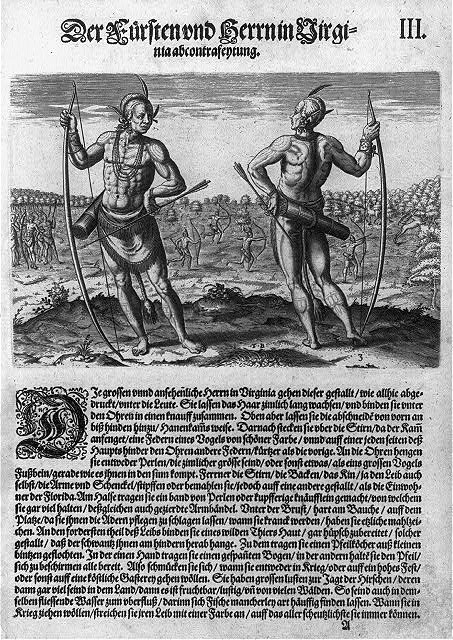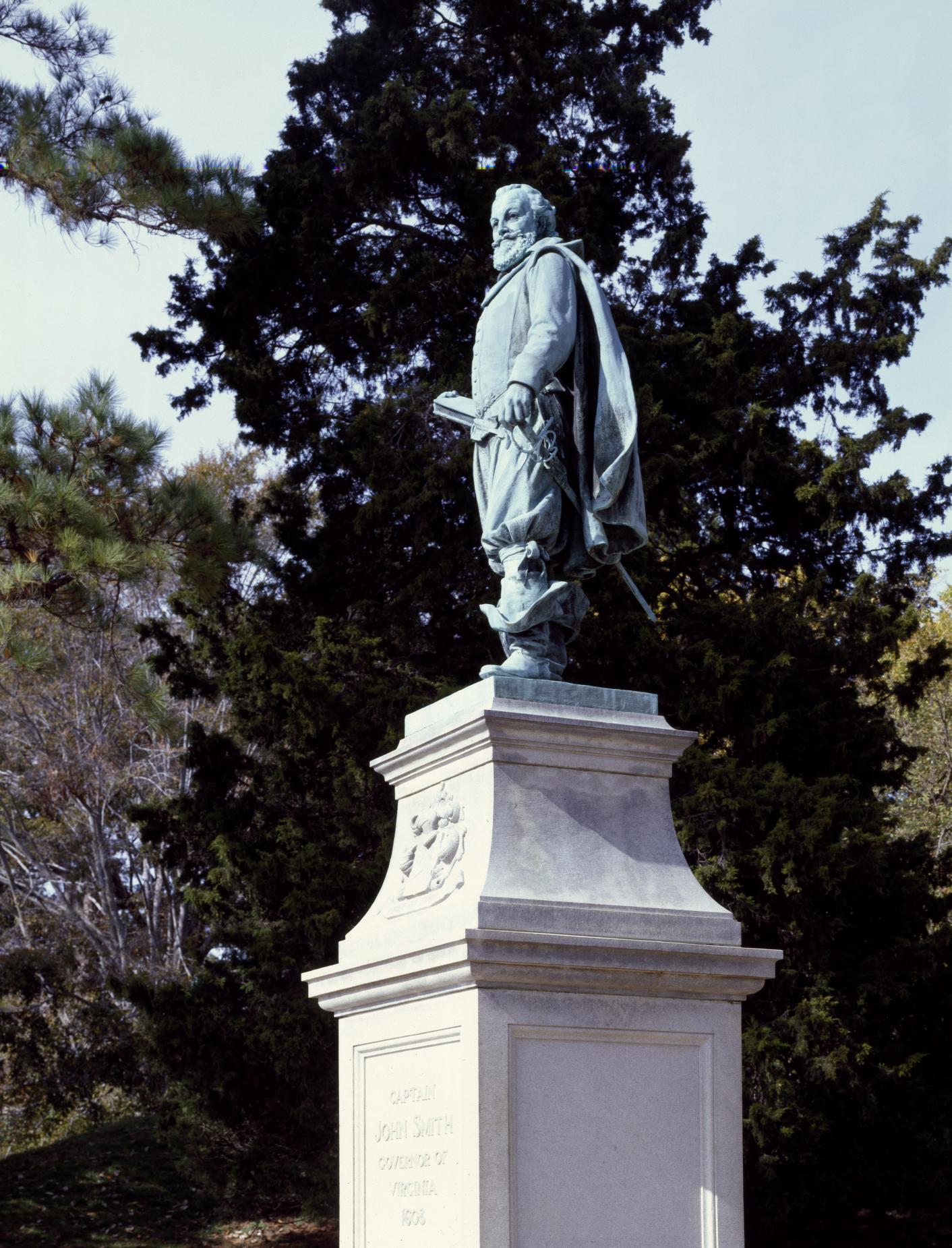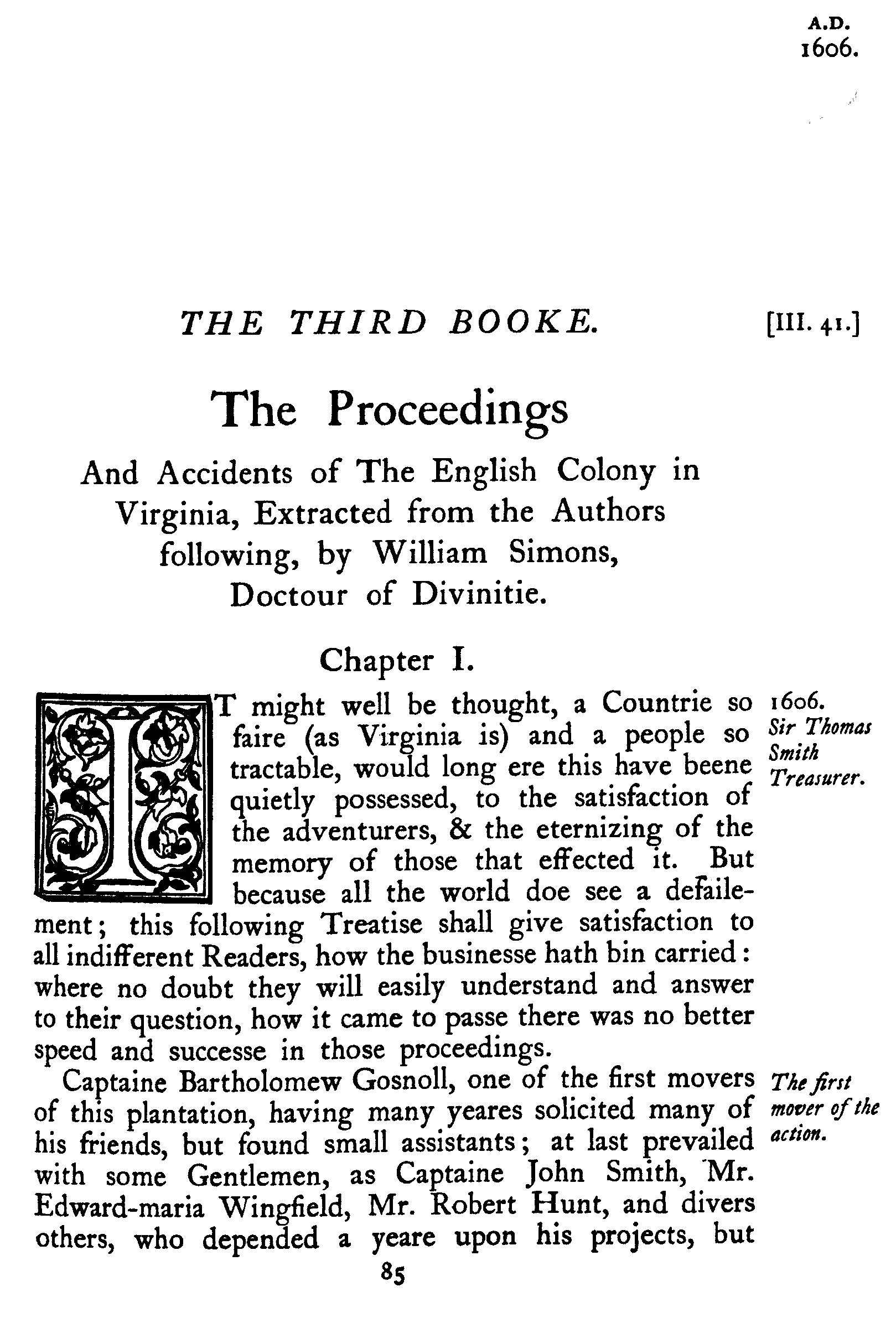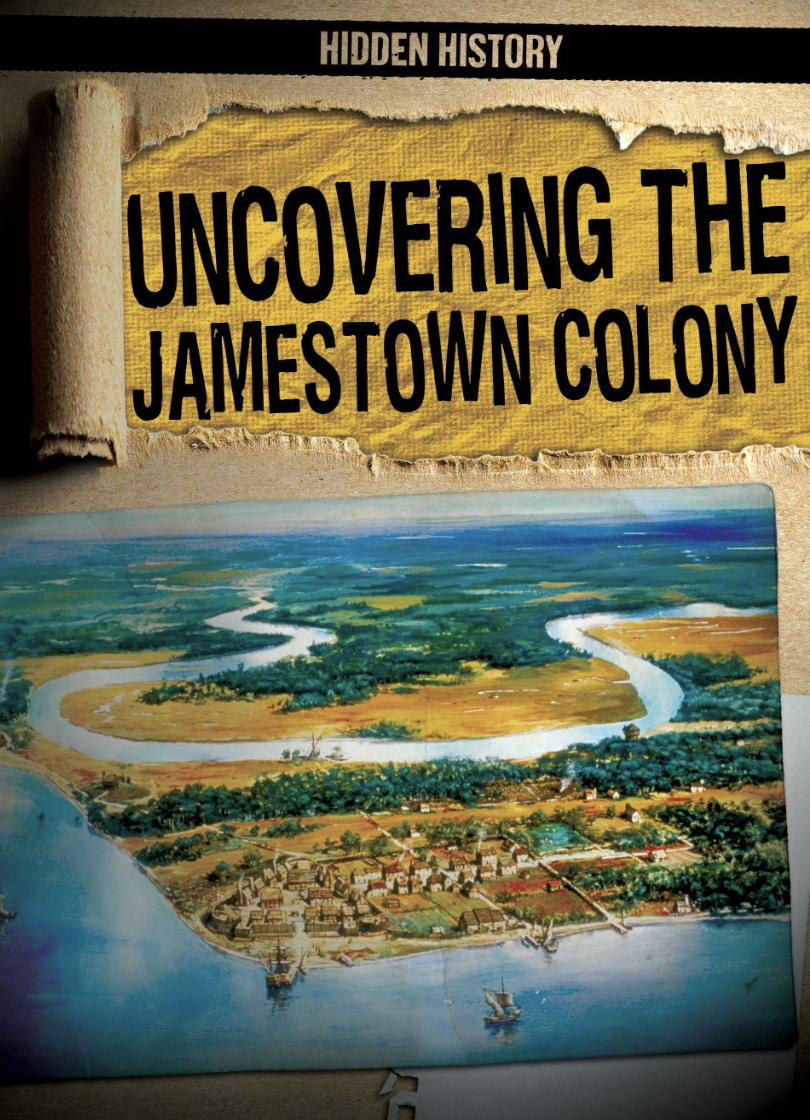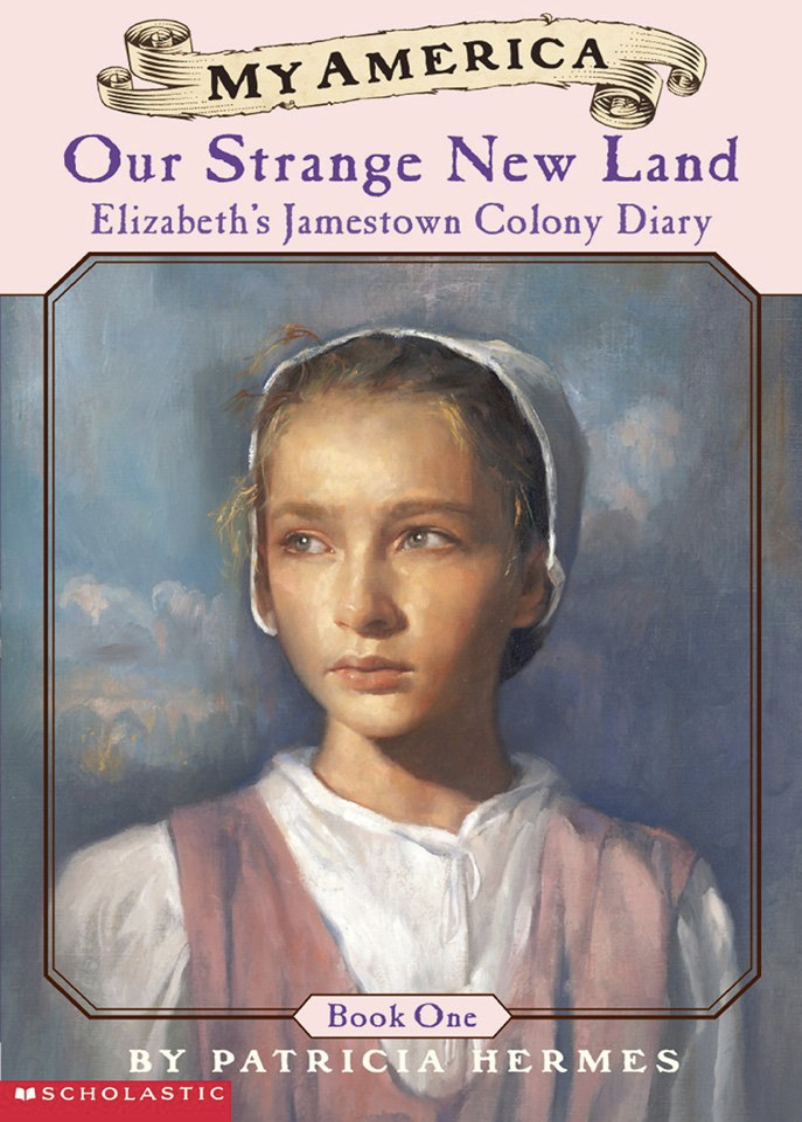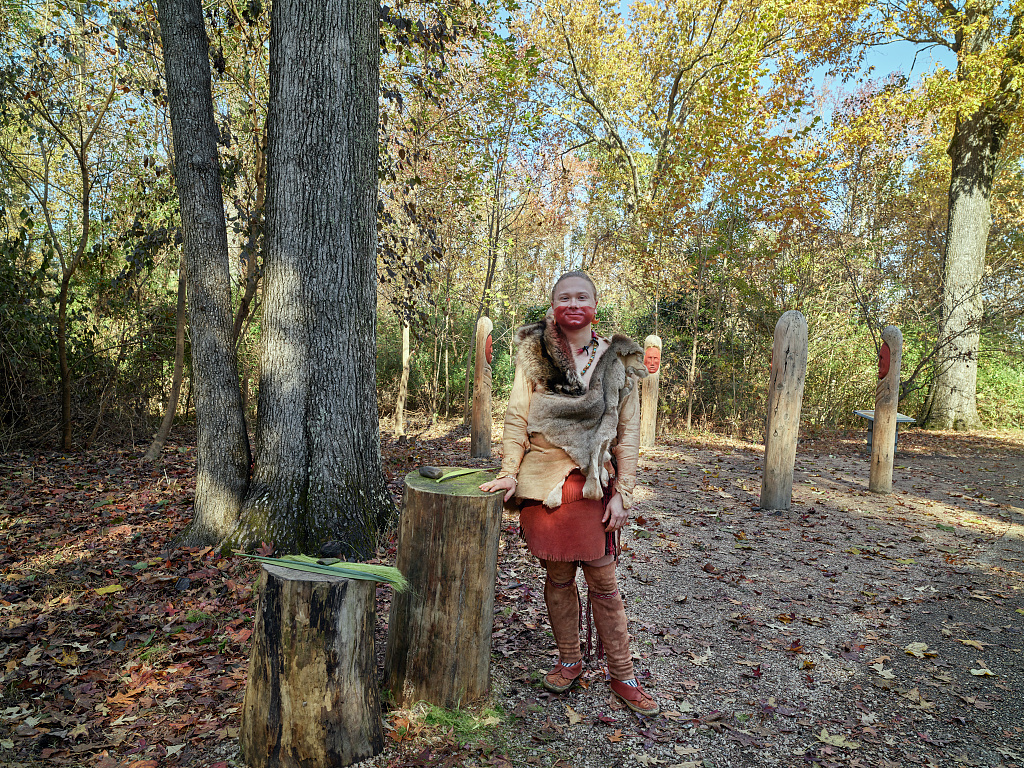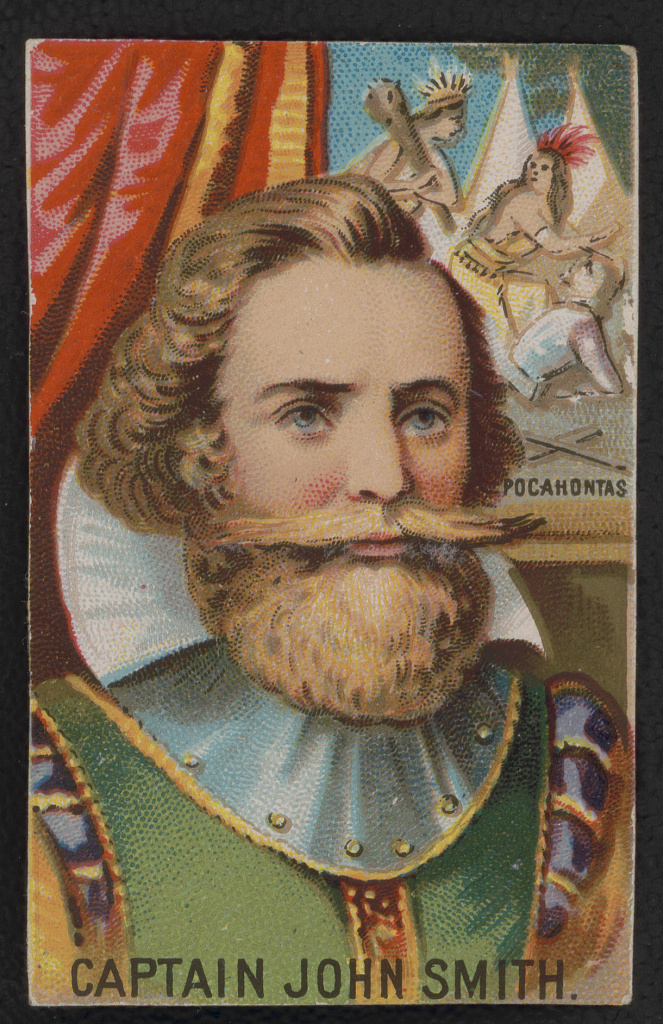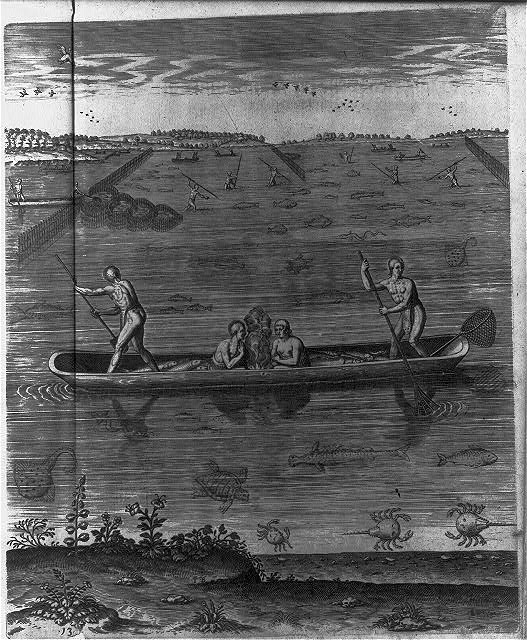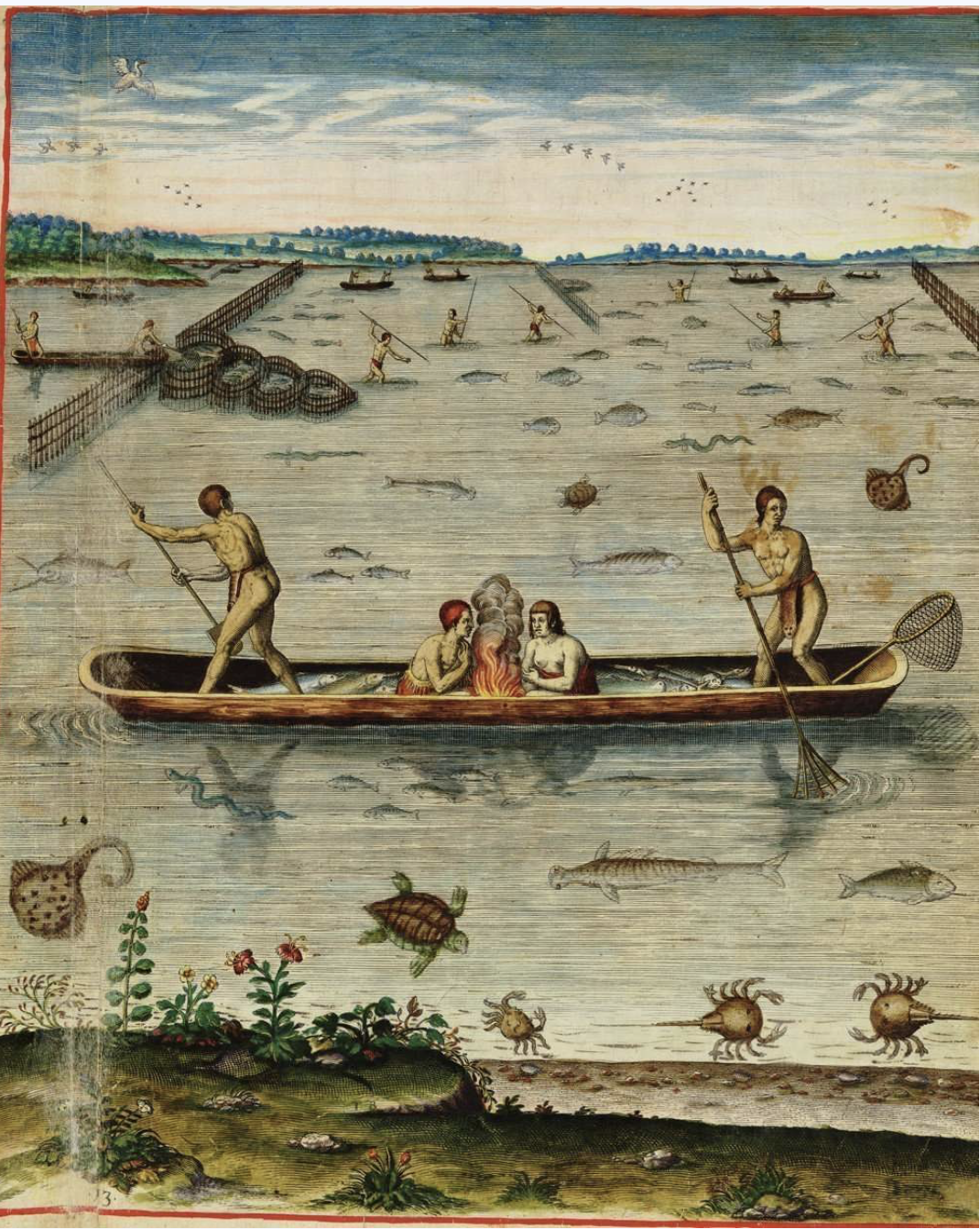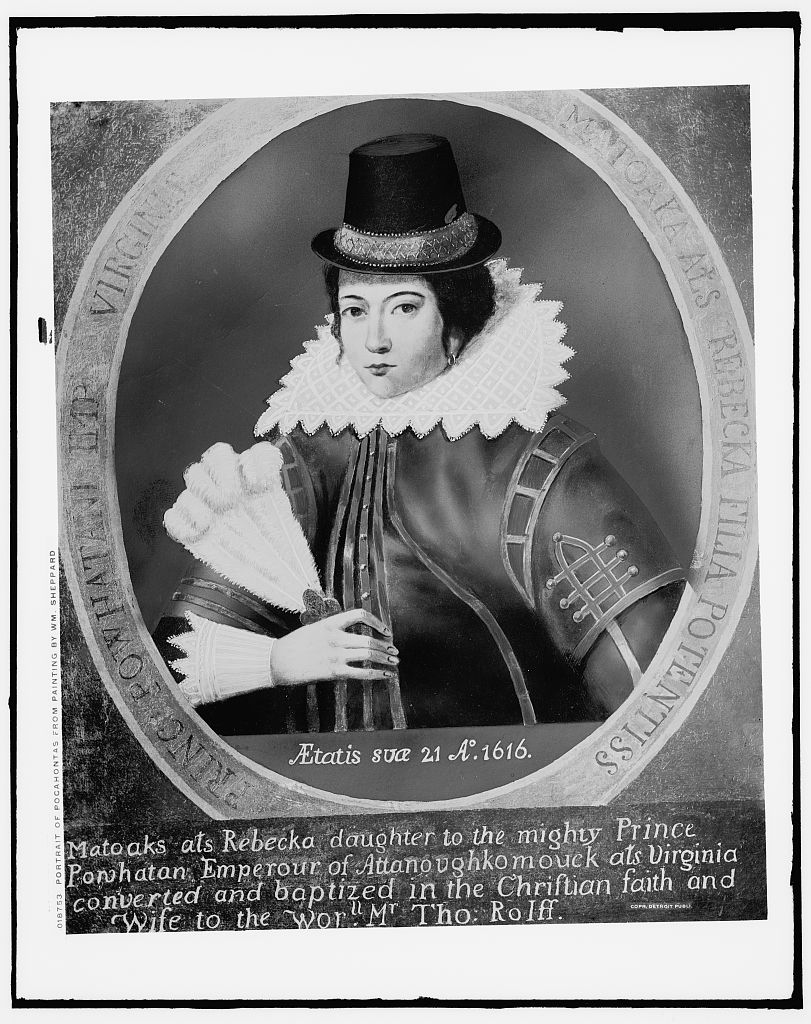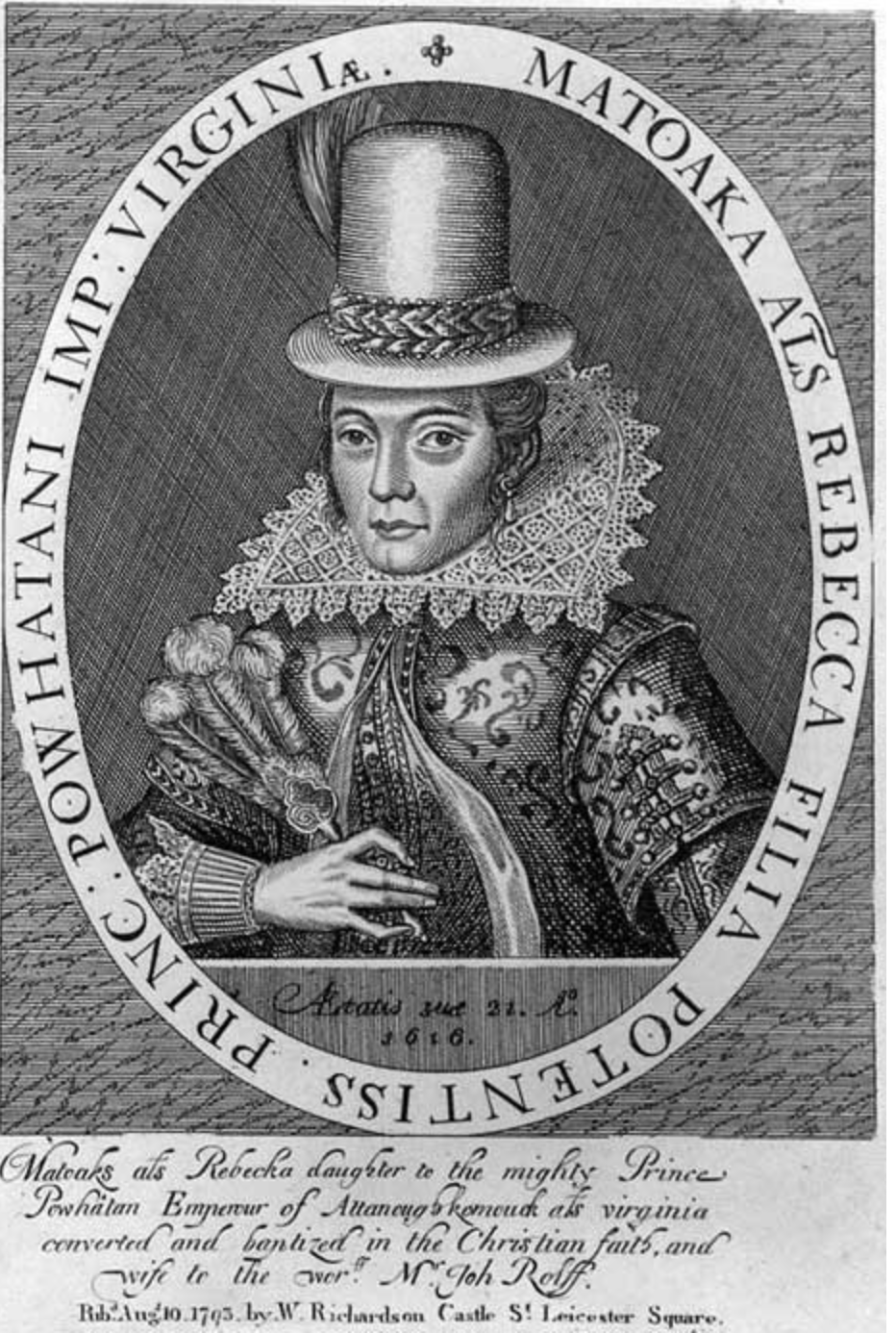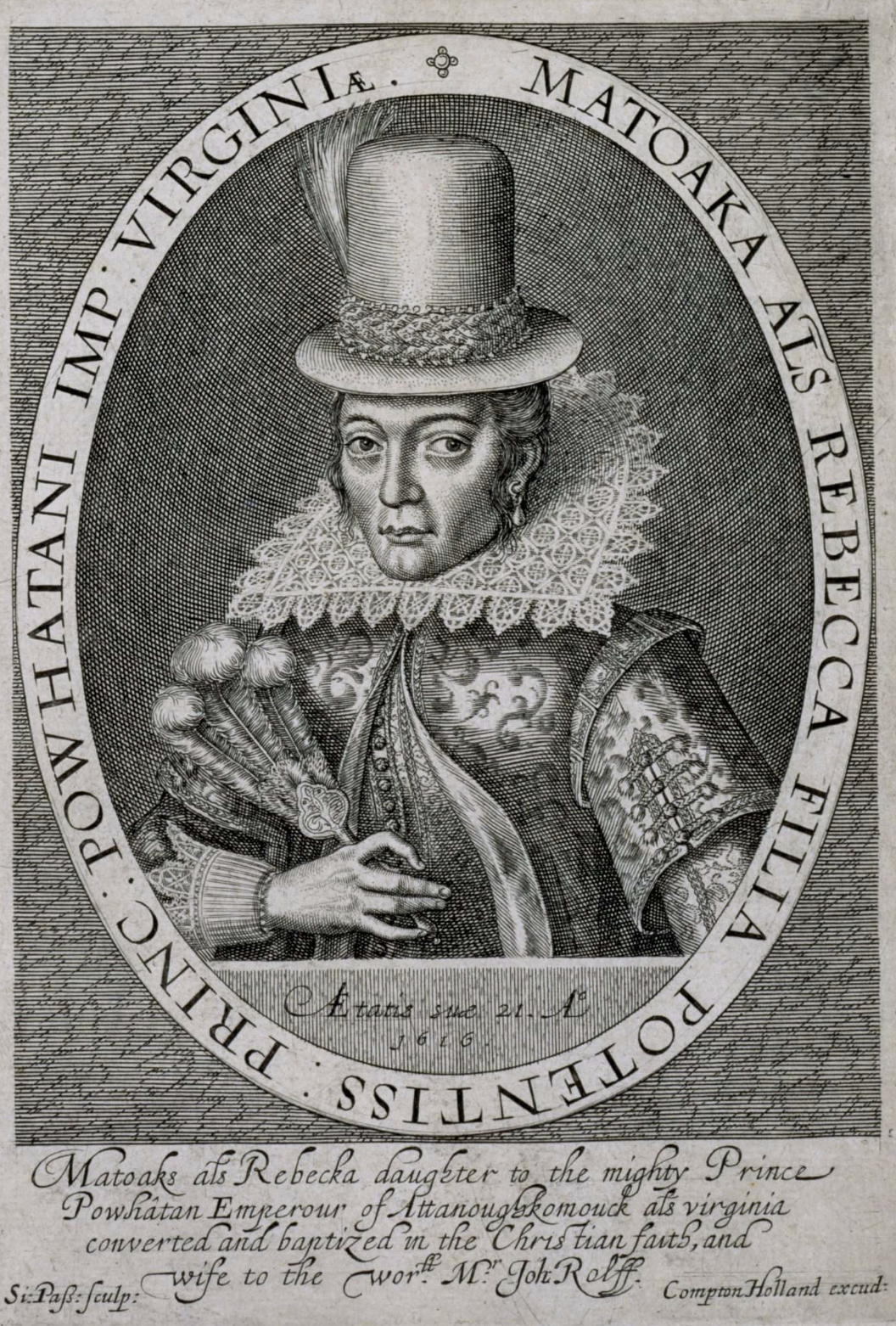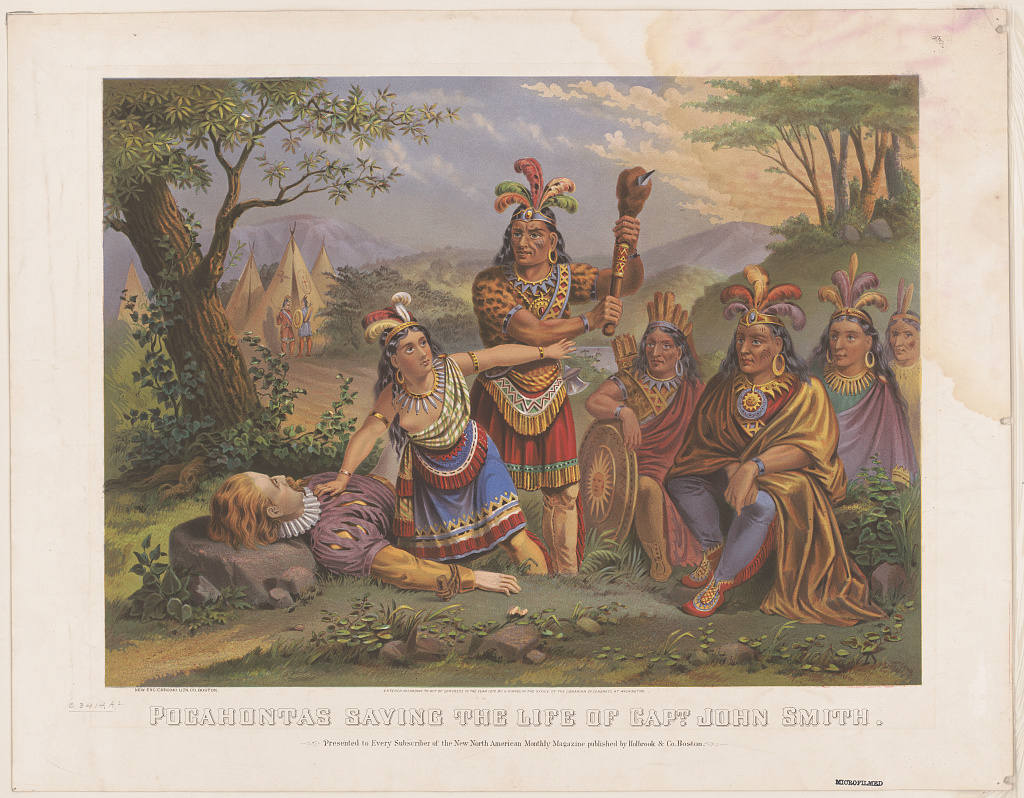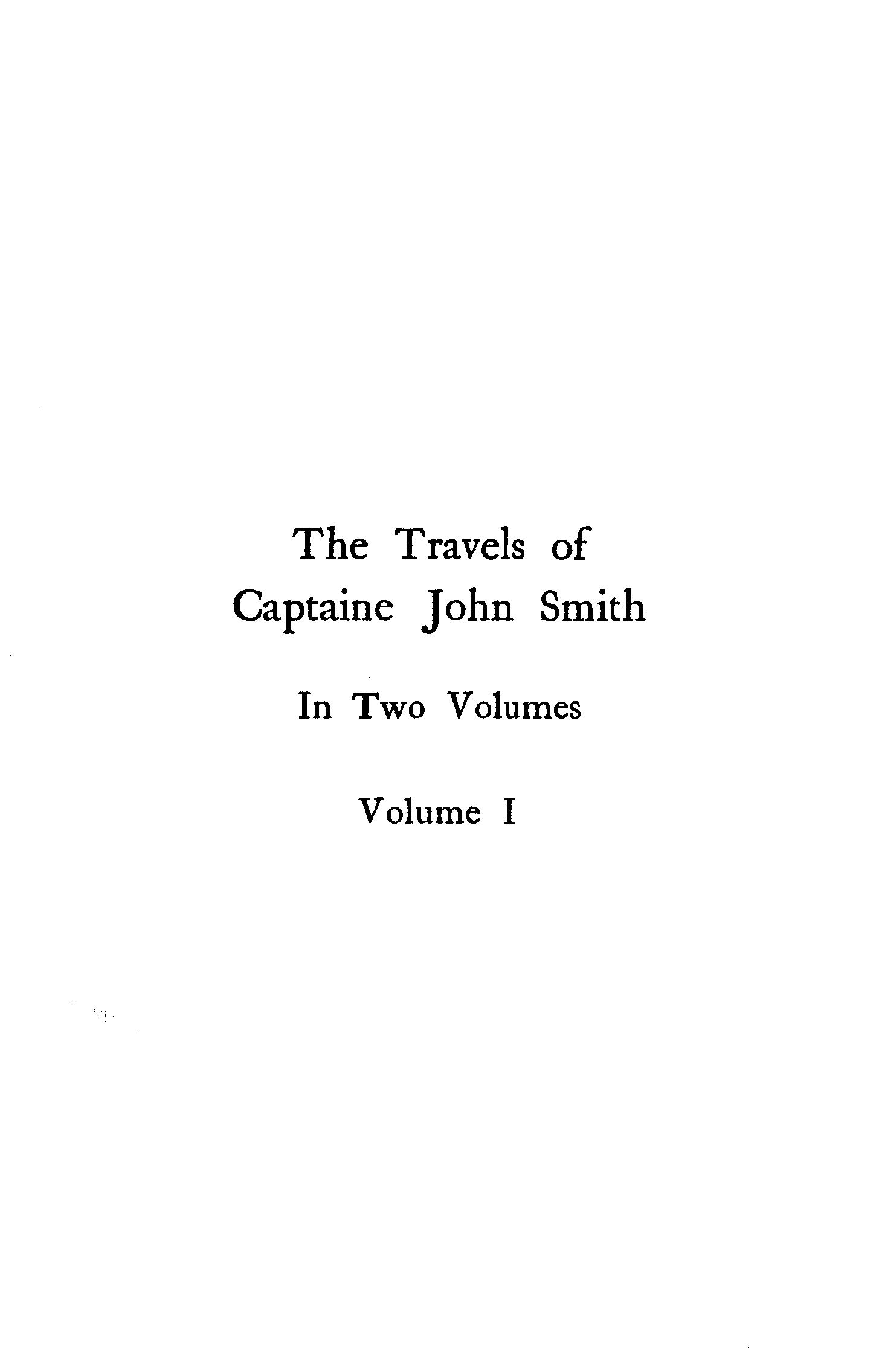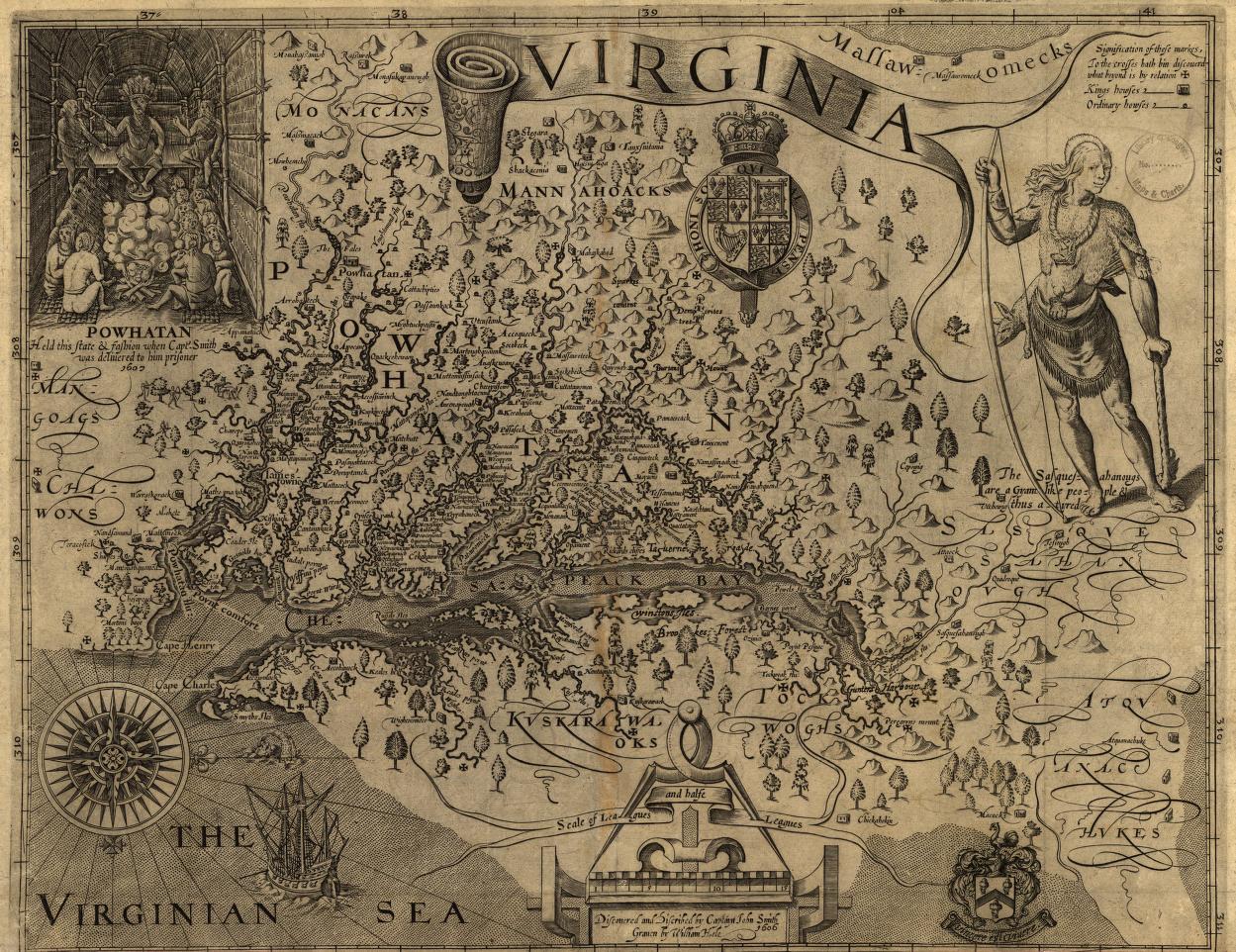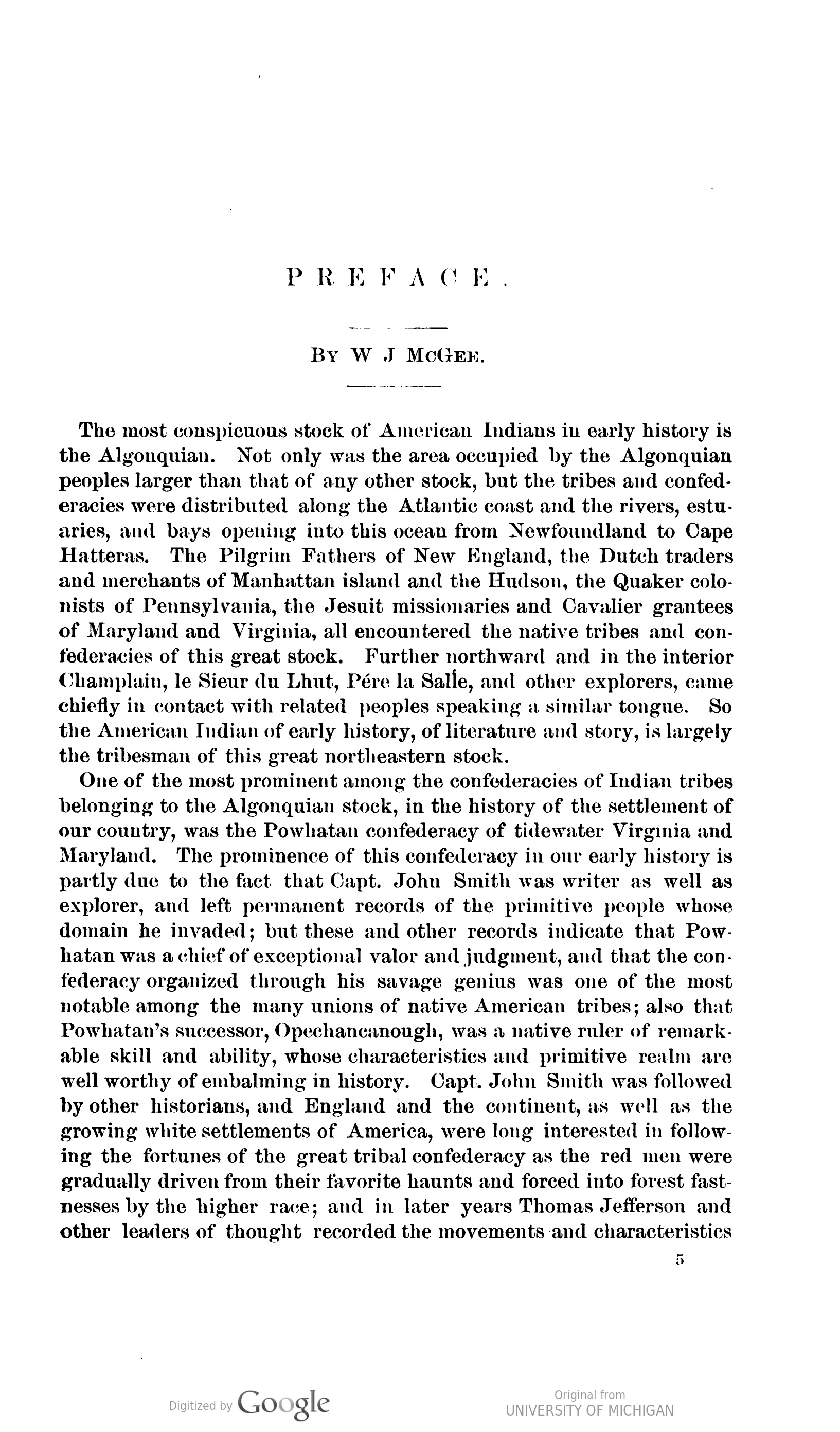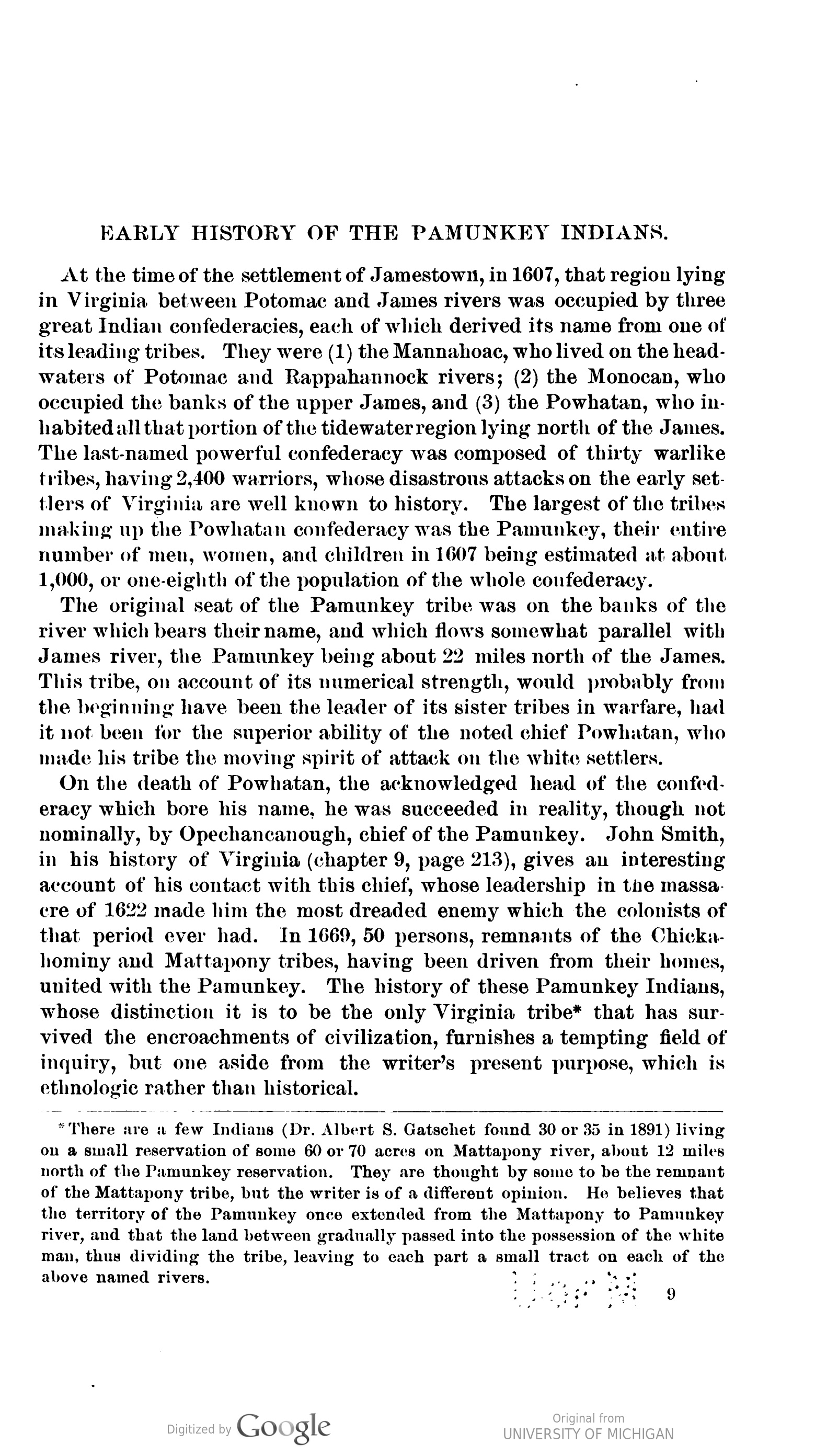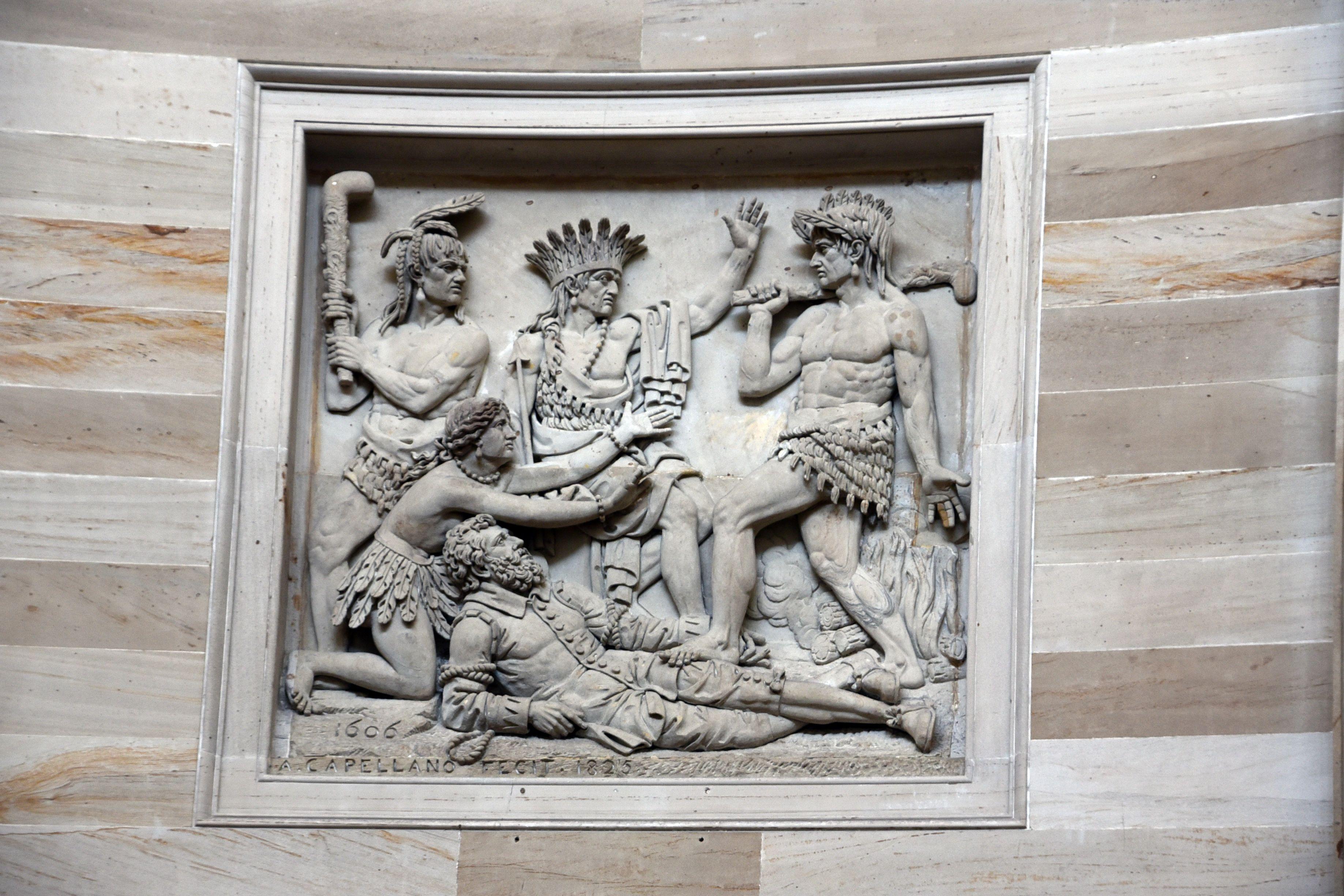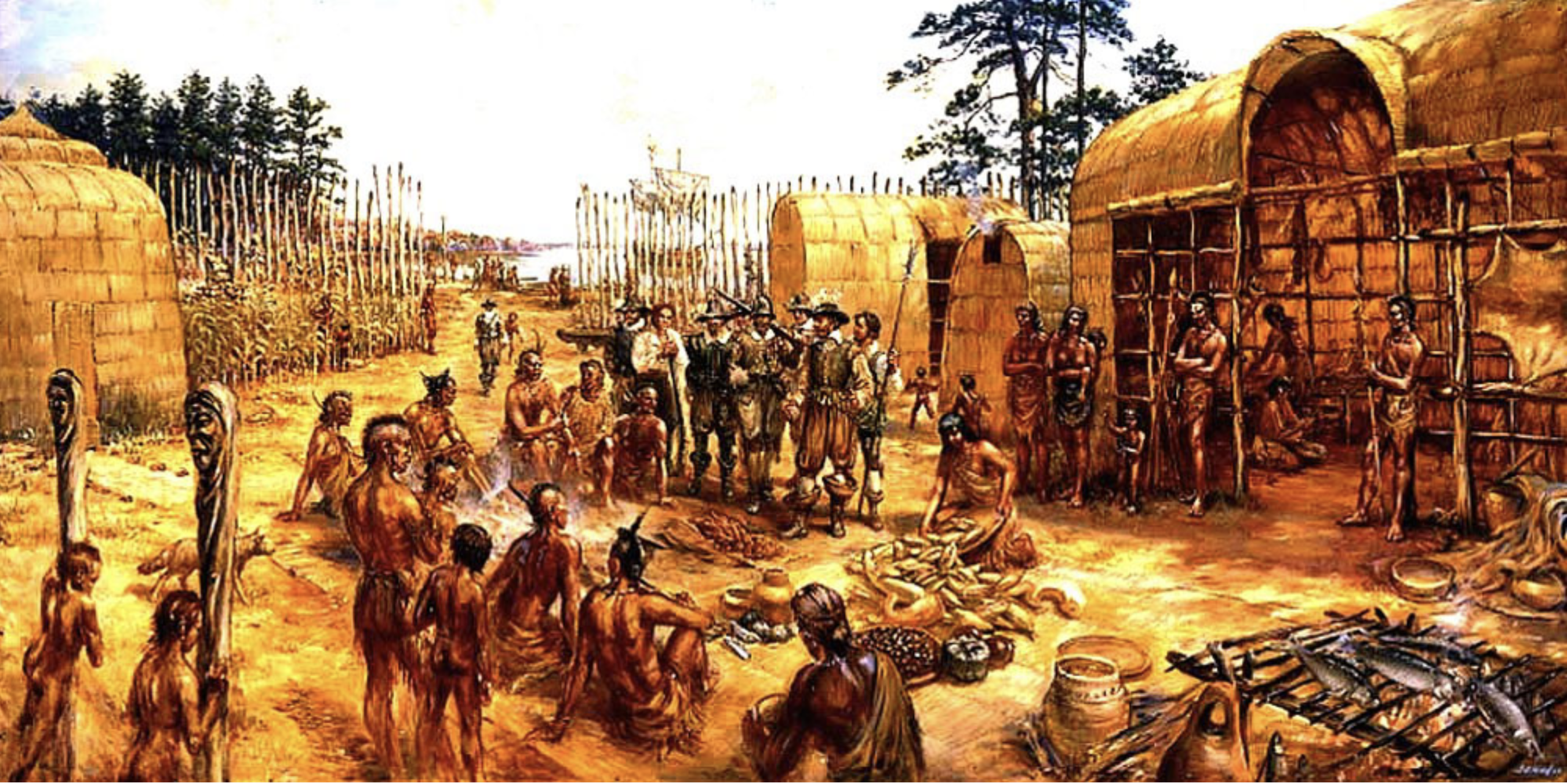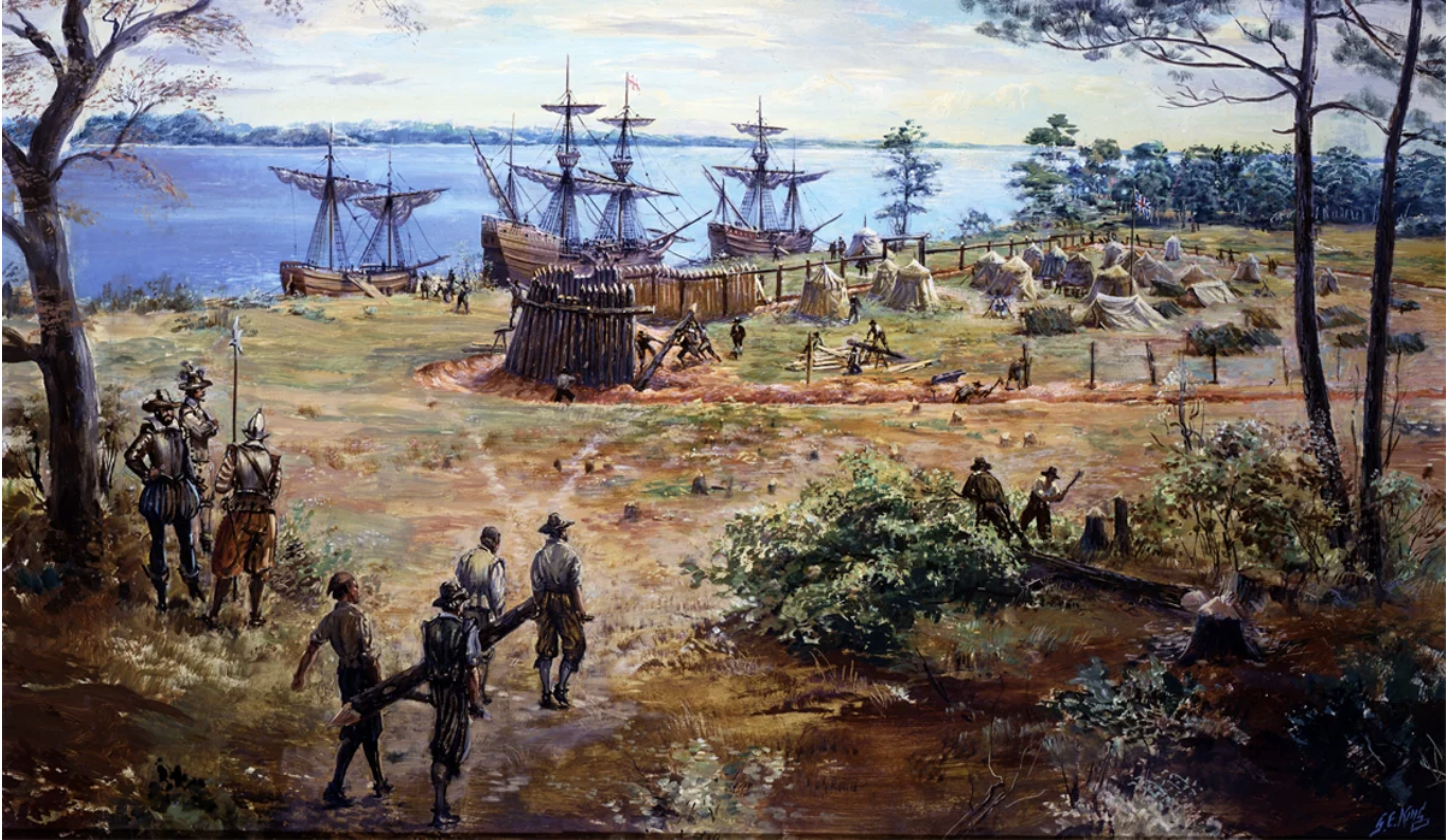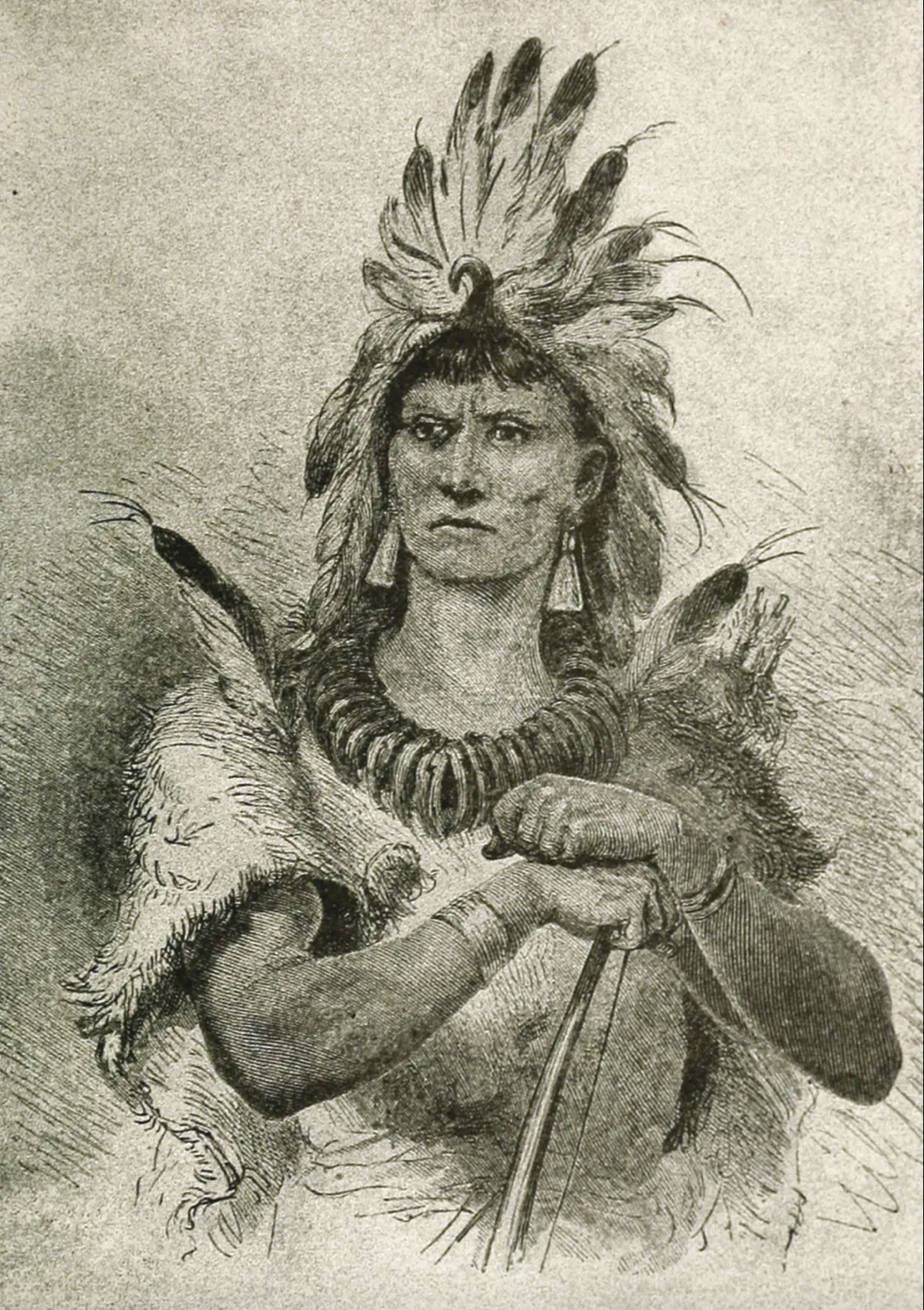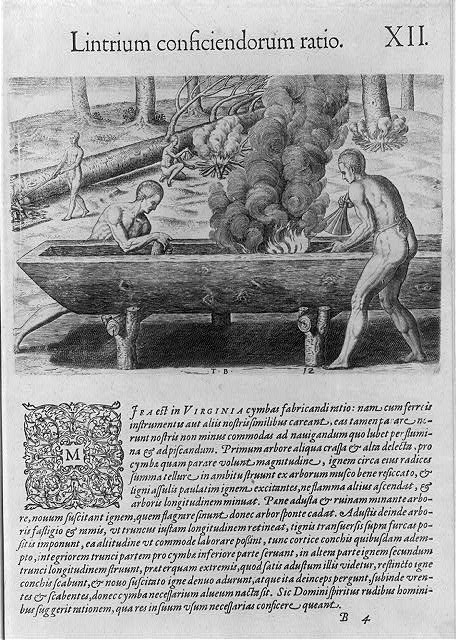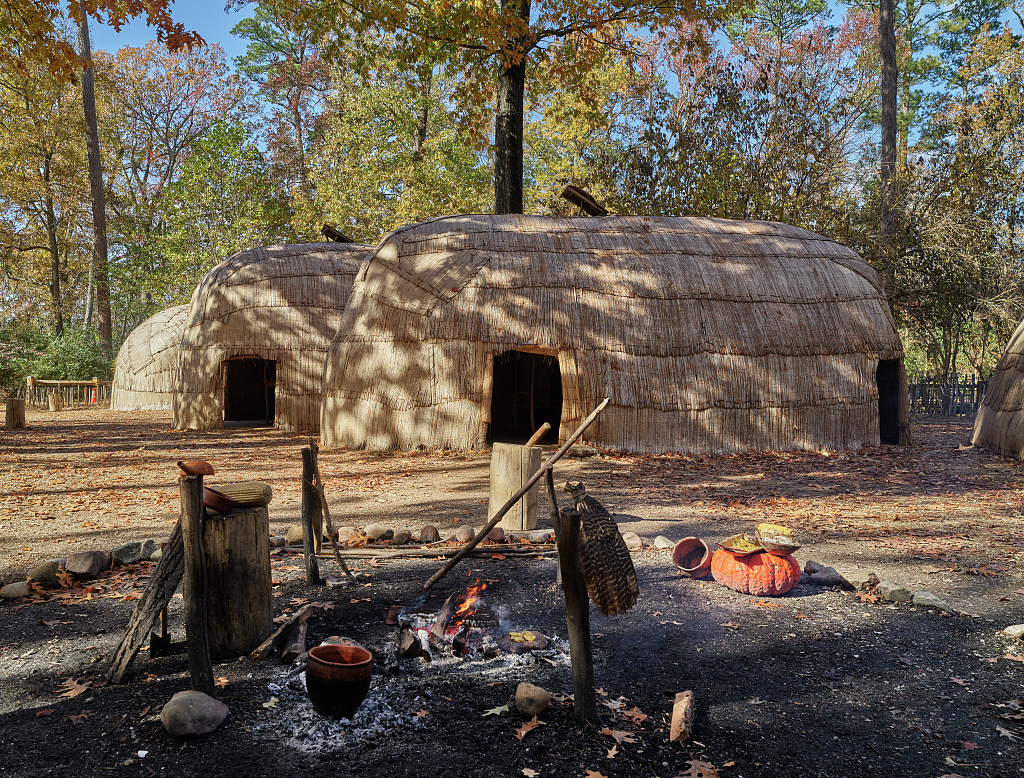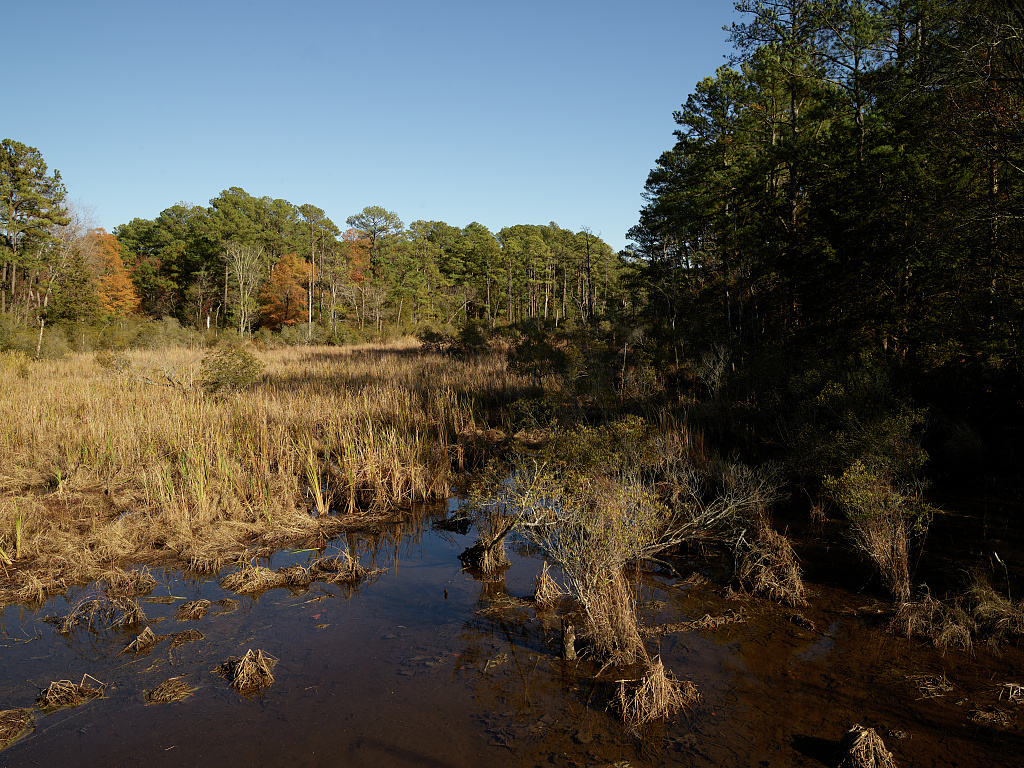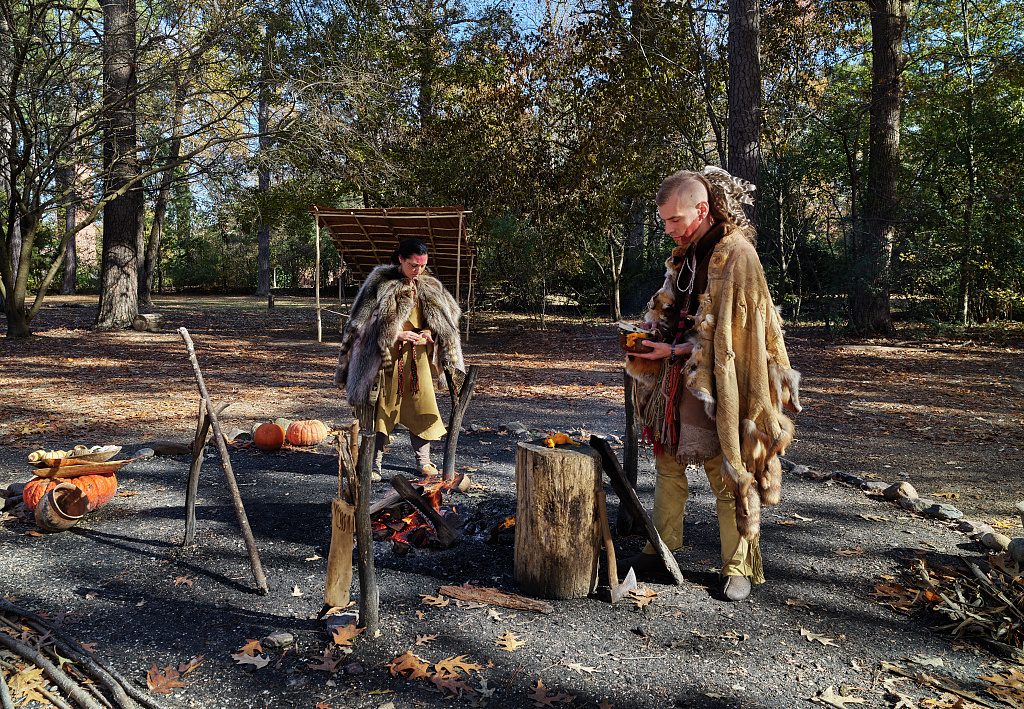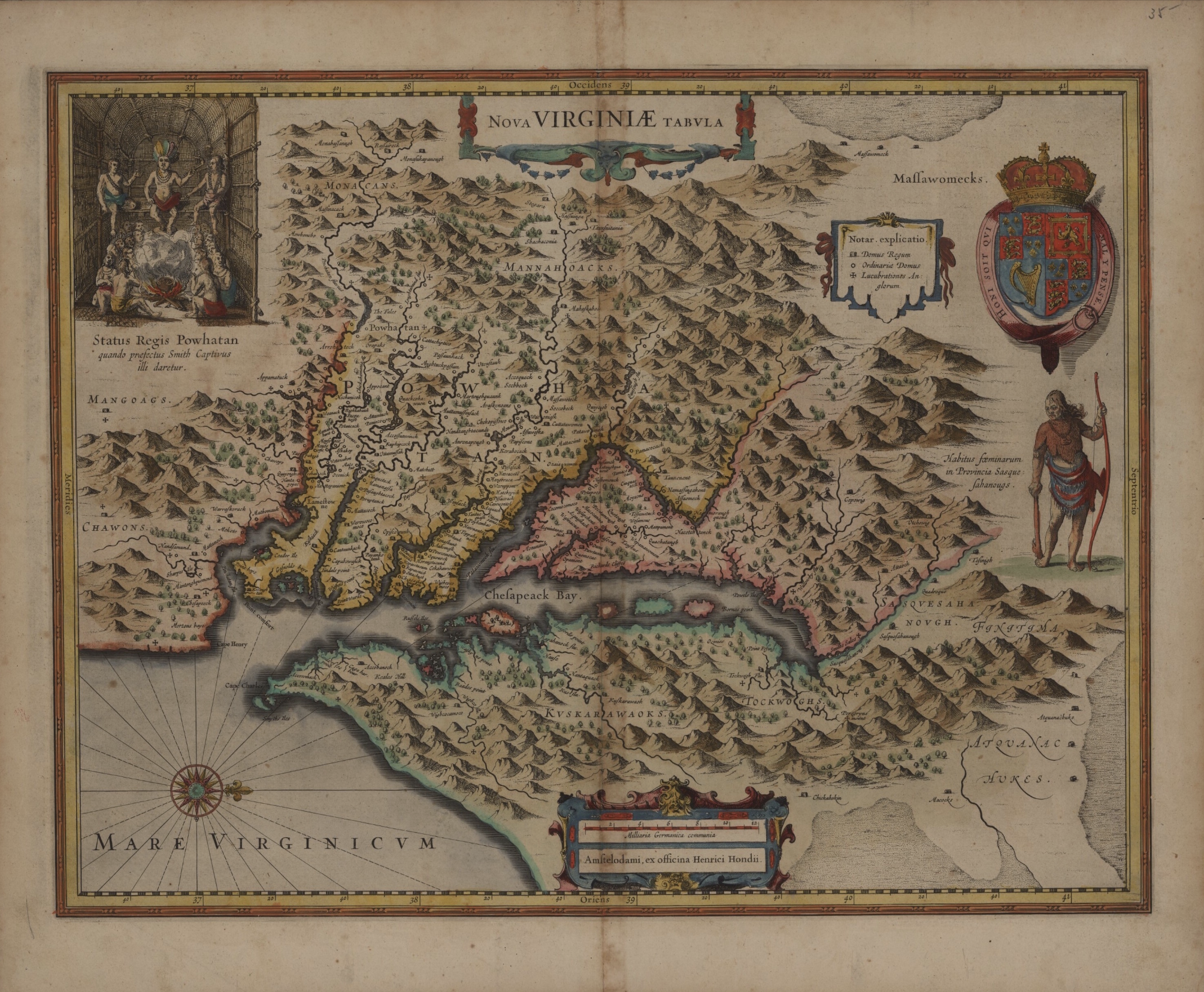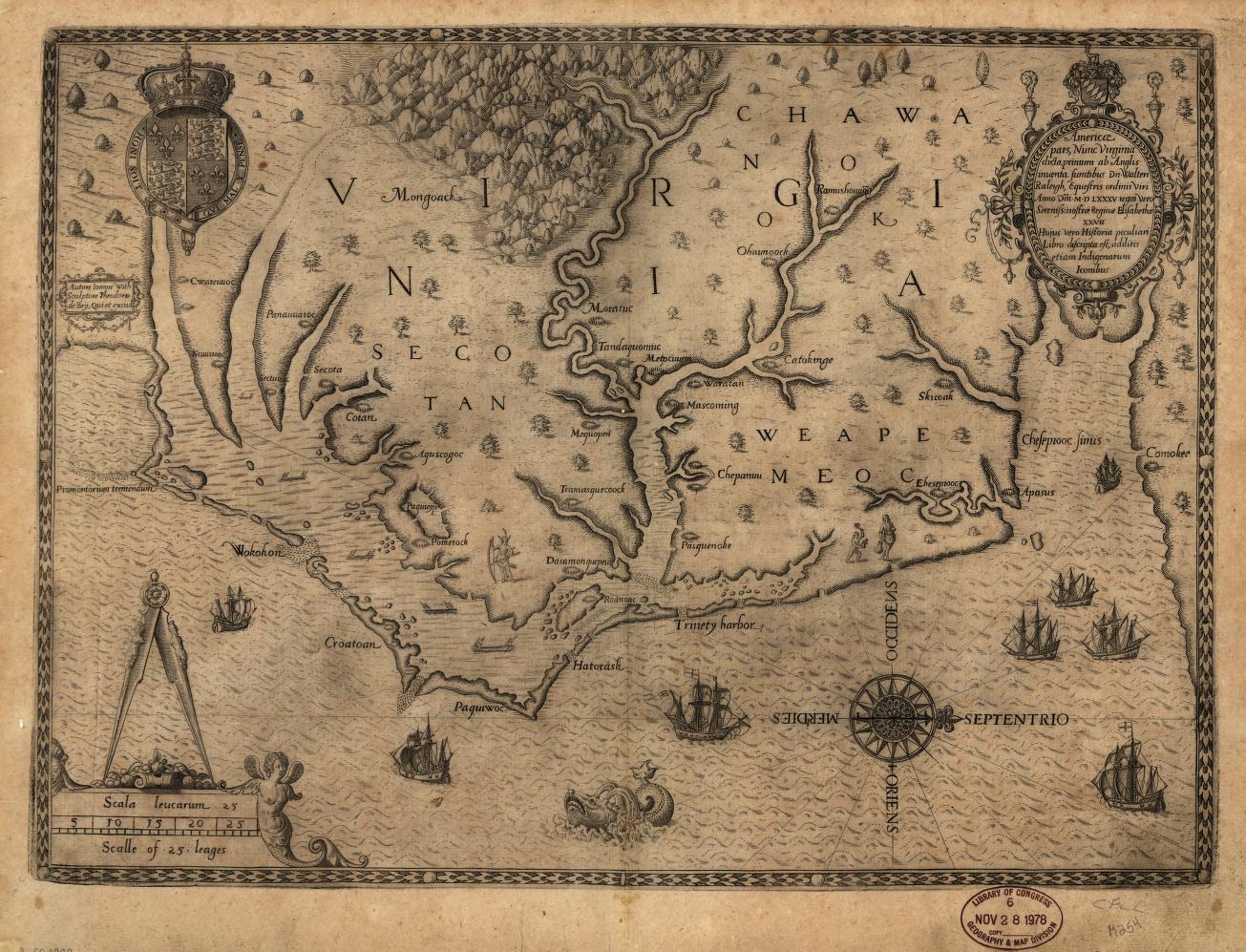This album was created by a member of the TPS Teachers Network, a professional social media network for educators, funded by a grant from the Library of Congress. For more information, visit tpsteachersnetwork.org.
Why Did the Powhatans Help Settlers After the Jamestown Fire of 1608?
Album Description
- Do a Question Formulation Technique (QFT) for the statue of John Smith image
- Conduct a Jigsaw Activity to learn more about the geography and history of Jamestown colony and the surrounding area.
- Use the following pieces:
- Photo of Jamestown environment: Marsh and woods on the grounds of Historic Jamestowne, a preservation and continuing excavation site at the location of the 1607 James Fort, near the later 17th-century (and present-day) city of Jamestown, Virginia
- Recreation of Pamunkey tribe photograph: America,Jamestown Settlement,Living-history museums,Powhatan Indian Village,Heather Dor ̌Johnson,Roger Balance
- Recreation of Pamunkey homes photograph: Yehakhin huts, single-family homes, of the re-created Powhatan Indian Village at the Jamestown Settlement in Jamestown, Virginia
- Book Image of Pamunkey Boat Building: The New World [...] / Lorant, ed. New York : Duell, Sloan and Pearce, 1965, p. 249
- Painting of Early Settlement: Construction of James Fort, Sidney E. King. U.S. Geological Survey.
- Painting of Chief Powhatan: Lives of Famous Indian Chiefs by Norman B. Wood., 1906
- Painting of Captain John Smith:
- Provide students with a copy of the Primary Source Analysis Tool.
- Use prompts from the Teacher's Guide for Analyzing Books & Other Printed Texts and Teacher's Guide Analyzing Newspapers.
- Once back in their base groups, students will share the primary sources they explored and answer the following questions:
- What are the common themes among these sources?
- What claims can you make about Jamestown? What evidence do you have for your claims?
- Use the following pieces:
- Complete a comparative analysis of different maps of the area.
- Use the following maps:
- Virginia (1624) by John Smith and William Hole
- Virginia--Maps--Early works to 1800 by John White, Theodor de Bry, and Thomas Harriet
- Use Zoom-In to focus on small sections of each map before looking at them more broadly.
- Provide students with a copy of the Primary Source Analysis Tool.
- Use prompts from the Teacher's Guide Analyzing Maps.
- Use the following maps:
- Consider pairing your study of the history of Jamestown and the Native communities that near it with a piece of historical fiction. In this album you will find links to Blood on the River by Elisa Carbone (2007) or for a look at events after the 1608 fire, Our Strange New Land: Elizabeth's Jamestown Colony Diary by Patricia Hermes (2002)
- A nonfiction children's book that could also be used is Uncovering the Jamestown Colony (Hidden History) by Caitlin McAneney
[A weroans, or chieftain, of Virginia]
Reference link: https://www.loc.gov/item/2001696964/
Reference note
Summary
- Full-length, front and back portraits of a Native chief in Virginia, with bow and arrow; hunting scene in the background.
Created / Published
- [1590]
Genre
- Book illustrations--1590
- Watercolors--1580-1590--Reproductions--1590
- Engravings--1590
Notes
- - Illus. in: Wunderbarliche, doch warhafftige Erklärung, von der Gelegenheit vnd Sitten der Wilden in Virginia ... / Erstlich in engelländischer Sprach beschrieben durch Thomam Hariot, vnd newlich durch Christ. P. in Teutsch gebracht. Franckfort am Mayn : Gedruckt bey J. Wechel, in Verlegung D. Bry, 1590, [plate] 3.
- - Engraving by Theodor de Bry after watercolor by John White.
- - Title transcribed from Lorant, p. 231.
- - The New World [...] / Lorant, ed. New York : Duell, Sloan and Pearce, 1965, p. 231
- - Reference copy in LOT 4411-C.
Repository
- Library of Congress Rare Book and Special Collections Division Washington, D.C. 20540 USA
Digital Id
- cph 3b01309 //hdl.loc.gov/loc.pnp/cph.3b01309
Statue of Captain John Smith on Jamestown Island, part of the Colonial National Historical Park in Jamestown, Virginia
Teaching Notes
Zoom In: What Do You Notice? How does this compare to Smith's other portrait?
Reference note
Created / Published
- [between 1980 and 2006]
Genre
- Transparencies--Color--1980-2010
Notes
- - Digital image produced by Carol M. Highsmith to represent her original film transparency; some details may differ between the film and the digital images.
- - Title, date, and keywords provided by the photographer.
- - Credit line: Photographs in the Carol M. Highsmith Archive, Library of Congress, Prints and Photographs Division.
- - Gift and purchase; Carol M. Highsmith; 2011; (DLC/PP-2011:124).
- - Forms part of the Selects Series in the Carol M. Highsmith Archive.
Repository
- Library of Congress Prints and Photographs Division Washington, D.C. 20540 USA http://hdl.loc.gov/loc.pnp/pp.print
Digital Id
- highsm 15089 https://hdl.loc.gov/loc.pnp/highsm.15089
Image 125 of Volume 1 (General Collections copy)
Teaching Notes
Read excerpts from book as descriptors of the harrowing journey from England to North America.
Reference link: http://www.loc.gov/resource/lhbcb.0262a/?sp=125
Reference note
Created / Published
- Glasgow : J. MacLehose ; New York : Macmillan, 1907.
Notes
- - Includes index.
- - Kislak accession no.: 2000.037.01.0012 (v. 1)
- - Kislak accession no.: 2000.037.02.0012 (v. 2)
Digital Id
Uncovering the Jamestown Colony by Caitlin McAneney (2016)
Teaching Notes
Publisher description: Jamestown is celebrated as the first permanent English settlement in North America, but underneath the well-known history is a darker past. In its beginning years, Jamestown was far from successful. In fact, most colonists who came to Jamestown never left; they died shortly after arriving. This fascinating book delves into the challenges of the colony, revealing its successes, tragedies, and even horrors such as cannibalism. Readers will be surprised to learn about the real-life Pocahontas and John Smith, and eager to find out more about what really happened in this Virginia colony's early days.
Our Strange New Land: Elizabeth's Jamestown Colony Diary, Book One (My America) by Patricia Hermes
Teaching Notes
Publisher summary: Award-winning author Pat Hermes tells the story of Elizabeth Barker, whose family sails from Plymouth, England, to Jamestown, Virginia, in 1609. This book helps to relaunch the My America series.
In May 1607, 3 ships sailed up the James River in Virginia. In the riverbank marshes, they made land and hung the flag--England's flag--establishing the first permanent English colony in Jamestown, Virginia. In 1609, the first ship carrying women and children arrived. After 71 days at sea, nine-year-old Elizabeth Barker is thrilled to be on dry land. Lizzie keeps a journal for Caleb, her twin brother who stayed in England because of his weak lungs. In her buoyant entries,Lizzie tells of the abundant forests, trading with and learning from the Indians, and adventures with her new friends.
Blood on the River: James Town, 1607 by Elisa Carbone (2007)
Teaching Notes
Publisher summary: Twelve-year-old Samuel Collier is a lowly commoner on the streets of London. So when he becomes the page of Captain John Smith and boards the Susan Constant, bound for the New World, he can’t believe his good fortune. He’s heard that gold washes ashore with every tide. But beginning with the stormy journey and his first contact with the native people, he realizes that the New World is nothing like he imagined. The lush Virginia shore where they establish the colony of James Town is both beautiful and forbidding, and it’s hard to know who’s a friend or foe. As he learns the language of the Algonquian Indians and observes Captain Smith’s wise diplomacy, Samuel begins to see that he can be whomever he wants to be in this new land.
Reference link: https://www.amazon.com/Blood-River-James-Town-1607/dp/0142409324
'Paramount Chief Powhatan | People of the Past'
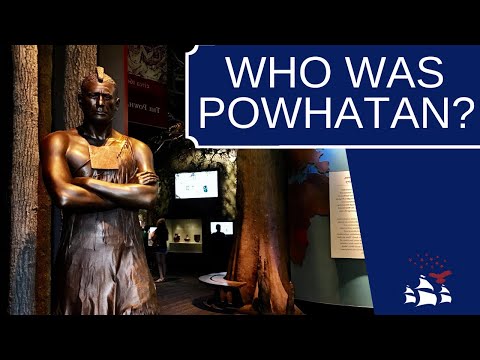
Reference note
'Many great leaders have shaped the history of Tsenacommacah, but the most widely known is likely Paramount Chief Powhatan. Paramount Chief Powhatan was born in the town of Powhatan, near the falls of the James River. His personal name was actually Wahunsenacawh with Powhatan being more akin to a nickname. He held the title of Paramount Chief or Mamanatowick, meaning he ruled over many tribes and towns in Tsenacommacah.'
World Explorers: John Smith (PBS World Explorers)
Teaching Notes
The English explorer John Smith was crucial to the exploration of and establishment of colonies within what is now the Northeastern United States. The first permanent English colony in the New World at Jamestown owes its creation to Smith, as does the mapping of the Chesapeake Bay.
'Jamestown, Virginia 1607 Colony'
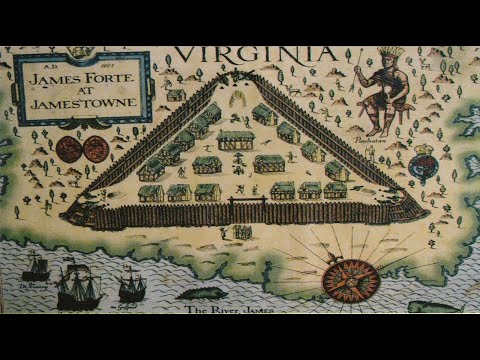
Reference note
'HISTORY OF NORTH AMERICA — After many years of unsuccessful North American settlements, the English founded in 1607 the colony of Jamestown in Virginia. EPISODE 182 — Jamestown 1607
Historical interpreter Cameron Garrett pauses in her duties of fashioning yucca fibers into cordage (crude rope), in the re-created Powhatan Indian Village of the Jamestown Settlement in Jamestown, Virginia
Reference link: https://www.loc.gov/item/2020724627/
Reference note
Created / Published
- 2019-11-24.
Genre
- Digital photographs--Color--2010-2020
Notes
- - Title, date, keywords, and additional description details based on information provided by the photographer.
- - The state-sponsored living-history museum tells the story of the Americas' first British colony, from the arrival of English colonists in Jamestown in 1607 to cultural encounters with Powhatan Indians and other events that planted the seeds of a new nation.
- - Purchase; Carol M. Highsmith Photography, Inc.; 2019; (DLC/PP-2019:069).
- - Forms part of Carol M. Highsmith's America Project in the Carol M. Highsmith Archive.
Repository
- Library of Congress Prints and Photographs Division Washington, D.C. 20540 USA https://hdl.loc.gov/loc.pnp/pp.print
Digital Id
- highsm 61462 https://hdl.loc.gov/loc.pnp/highsm.61462
Captain John Smith
Teaching Notes
What do you notice and wonder? How does this portrait compare with the one of Chief Powhatan?
Reference link: http://www.loc.gov/item/2015651600/
Reference note
Summary
- Print shows Captain John Smith, bust portrait, facing slightly right, in front of a red curtain, which is drawn aside to reveal a painting depicting Pocahontas interceding to save Smith's life. This may be part of the Great Americans cigarette series by W. Duke, Sons & Co.
Created / Published
- [Place not identified] : [Publisher not identified], [1888?]
Genre
- Cigarette cards--1880-1890
- Chromolithographs--Color--1880-1890
Notes
- - Title from item.
- - (DLC/PP-2001:068).
- - Forms part of: Marian S. Carson collection at the Library of Congress.
Repository
- Library of Congress Prints and Photographs Division Washington, D.C. 20540 USA http://hdl.loc.gov/loc.pnp/pp.print
Digital Id
- ppmsca 39614 //hdl.loc.gov/loc.pnp/ppmsca.39614
[How they catch fish]
Reference link: https://www.loc.gov/item/2001696969/
Reference note
Summary
- Native men and women in a dugout canoe fishing while others in the background stand in the river and spear fish.
Created / Published
- [1590]
Genre
- Book illustrations--1590
- Watercolors--1580-1590--Reproductions--1590
- Engravings--1590
Notes
- - Illus. in: Wunderbarliche, doch warhafftige Erklärung, von der Gelegenheit vnd Sitten der Wilden in Virginia ... / Erstlich in engelländischer Sprach beschrieben durch Thomam Hariot, vnd newlich durch Christ. P. in Teutsch gebracht. Franckfort am Mayn : Gedruckt bey J. Wechel, in Verlegung D. Bry, 1590, [plate] 13.
- - Engraving by Theodor de Bry after watercolor by John White.
- - Title transcribed from Lorant, p. 250.
- - The New World [...] / Lorant, ed. New York : Duell, Sloan and Pearce, 1965, p. 251
- - Reference copy in LOT 4411-C.
Repository
- Library of Congress Rare Book and Special Collections Division Washington, D.C. 20540 USA
Digital Id
- cph 3b01978 //hdl.loc.gov/loc.pnp/cph.3b01978
Incolarum Virginiae piscandi ratio (The Method of Fishing of the Inhabitants of Virginia)
Teaching Notes
Do a notice and wonder with this image. What is each person doing? Why? 3 - 5 Social Studies/History
Incolarum Virginiae piscandi ratio (The Method of Fishing of the Inhabitants of Virginia).png
Teaching Notes
A group of Indigenous people is portrayed using fire, spears, and traps to catch fish in this colored engraving by Theodor de Bry based on a watercolor painting by John White. Adding considerable detail to White's eyewitness sketch, de Bry shows life as it was lived by the Algonquian-speaking people in the Outer Banks region of present-day North Carolina. These people are closely related in language and culture to the Indigenous residents of Tidewater Virginia, and White's paintings are an important source of historical and ethnographic information about both groups.
White's original painting showed fewer fish and fishermen and less intricate weirs, or traps. De Bry's additions, probably an attempt to highlight Virginia's abundance, were based on descriptions by Thomas Hariot, who accompanied White and approximately 600 colonists to Roanoke in 1585. In a caption to the engraving, Hariot described how the Indigenous people "by nighte or day [struck] fishes, and take them opp into their boates." At night, fire may have been used as bait, attracting fish to its light. White's original depictions of a brown pelican, swans, geese, and ducks are reproduced here, as are the hammerhead shark, sturgeon, and king crab. De Bry added loggerhead turtles, land crabs, and other fish, based either on lost White paintings or on the work of other artists.
De Bry's engravings accompanied A briefe and true report of the new found land of Virginia, Hariot's description of his year at Roanoke, which was intended to serve, in part, as a justification for further colonizing efforts. These rare, hand-colored versions of the illustrations appeared in a 1590 edition published in Latin.
Reference link: https://encyclopediavirginia.org/213hpr-c527f0b8feabb40/
Reference note
'Powhatan Hunting Technology and Strategies in the 17th-Century'
Teaching Notes
Review this video when discussing hunting and fishing practices of Powhatan tribes. Ask students to retell what they notice about hunting and fishing techniques.
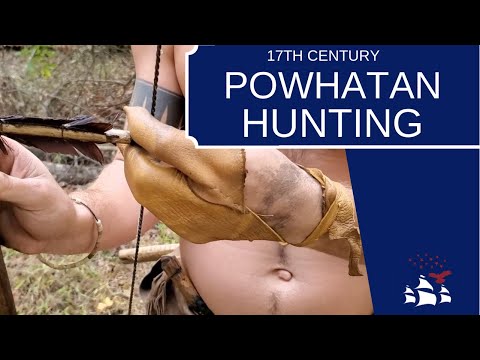
Reference note
'Join Russell as he talks about the technology, skills, and strategies employed by Powhatan peoples in the 17th-century. From weapons to calls to decoys, the Powhatan employed many techniques to hunt in Tsenacommacah.'
'Primed and Loaded | Introduction to the Powhatan Long Bow'
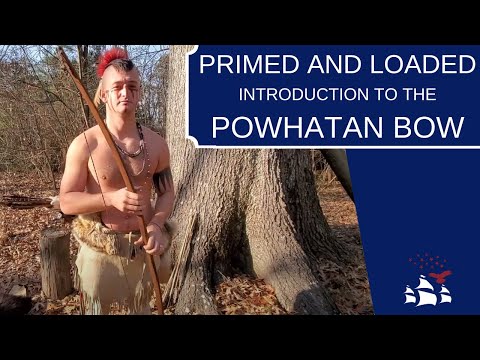
Reference note
'Join Russell today as he introduces us to the Powhatan bow from creation to use. He also shows us some of the arrows that he has made and shows us his skill with a bow.
Check out the building of a Powhatan arrow -- https://www.youtube.com/watch?v=AXb8L1ZmLvc&t
Check out the making of a Powhatan stone arrow point -- https://www.youtube.com/watch?v=blxfwIYvtqs'
Portrait of Pocahontas, from painting by Wm. Sheppard
Teaching Notes
A painting of imagined adult Pocahontas. What do you notice about this compared with the portrait that was done of her?
Reference link: http://www.loc.gov/resource/det.4a26409/
Reference note
Created / Published
- c[between 1900 and 1920]
Genre
- Portrait paintings--Reproductions
- Dry plate negatives
Notes
- - Photograph of a painting in the United States Capitol, copied from original by William Sheppard, dated 1616, at Barton rectory, Norfolk, England.
- - Detroit Publishing Co. no. M 18753.
- - Gift; State Historical Society of Colorado; 1949.
Repository
- Library of Congress Prints and Photographs Division Washington, D.C. 20540 USA http://hdl.loc.gov/loc.pnp/pp.print
Digital Id
- det 4a26409 //hdl.loc.gov/loc.pnp/det.4a26409
Pocahontas : Unidentified artist, copy after- Simon van de Passe, 1595 – 1647. publisher- William Richardson : Engraving on paper, 1793 : National Portrait Gallery, Smithsonian Institution.png
Teaching Notes
Pocahontas’s only known portrait was created in England, during the last few months of her life. The only surviving record of the sitting is an engraving by Simon van de Passe. This engraving has been the model for many of Pocahontas’s later portraits, including a painting by an unknown artist currently hanging in the National Portrait Gallery. This is believed to be the oldest oil portrait modeled after the van de Passe engraving.
Pocahontas is dressed in English costume in rich shades of red, gold, and green, with white lace cuffs and high collar, a pearl earring, and holding a white and gold ostrich feather fan. To make Pocahontas’s English transformation complete, her skin, hair, and eye color have been significantly lightened.
Pocahontas was the daughter of Washunsenaca or Powhatan, chief of the Powhatan tribe. Born around 1597/98, Pocahontas grew up in her father’s capital, Werowocomoco, located along the Pamunkey (now York) River.
Reference link: https://npg.si.edu/blog/collection-pocahontas
Reference note
Unidentified artist
copy after- Simon van de Passe, 1595 – 1647
publisher- William Richardson : Engraving on paper
1793 : National Portrait Gallery, Smithsonian Institution
Face to Face: https://npg.si.edu/blog/collection-pocahontas
Pocahontas-Simon-van-de-Passe-1616
Teaching Notes
This would be interesting as a portrait comparison of original vs. the copy done later, also featured in album.
This 1616 engraved portrait of the Virginia Indigenous woman Pocahontas is the only known image of her from life. Simon van de Passe, who made the engraving, was a Dutch artist working in London when Pocahontas arrived in England with her husband, John Rolfe. While in London, Pocahontas was lodged and clothed at the expense of the Virginia Company of London, the joint-stock corporation dedicated to the settlement of Virginia. This engraving was made as part of a fundraising effort by the company. The young Indigenous woman is portrayed in elite European fashion: she wears a Jacobean-era, high-necked dress (covering any tattoos she might have had), and in her right hand she holds ostrich plumes, a symbol of royalty. The inscription around the image includes the names Matoaka, the secret personal name given to Pocahontas in infancy, and Rebecca, the Christian name she later adopted.
This engraving was published in Bazilioologia: A Booke of Kings (1618), a collection of portraits of British monarchs and notables, attesting to the prestige accorded Pocahontas in England.
Reference link: https://encyclopediavirginia.org/18hpr-f92351f53c8c28b/
Reference note
'Werowocomoco: A Powhatan Place of Power'
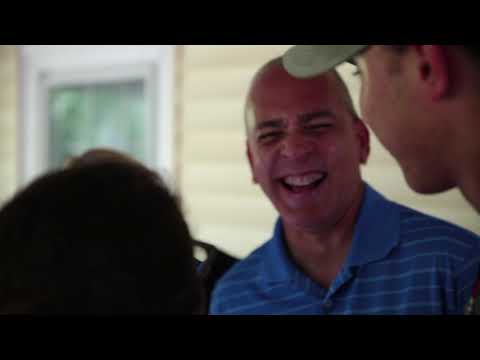
Reference note
'The discovery of Werowocomoco was confirmed more than 400 years after the Indian leader Powhatan first interacted with people from Jamestown.
Check out a short film made in partnership with the National Park Service about this historic place and learn more about the sacred site and Native Americans in the Chesapeake region at chesapeakeconservancy.org/werowocomoco and nps.gov/cajo/planyourvisit/werowocomoco.htm'
Pocahontas saving the life of Capt. John Smith / New England Chromo. Lith. Co.
Teaching Notes
Compare/contrast this image of Powhatan with the other. What do you notice?
Reference link: http://www.loc.gov/resource/pga.07768/
Reference note
Created / Published
- Boston : New Eng. Chromo. Lith. Co., c1870.
Genre
- Chromolithographs--Color--1870
Notes
- - C3414A2 U.S. Copyright Office.
Repository
- Library of Congress Prints and Photographs Division Washington, D.C. 20540 USA
Digital Id
- pga 07768 //hdl.loc.gov/loc.pnp/pga.07768
- cph 3g03368 //hdl.loc.gov/loc.pnp/cph.3g03368
- cph 3a52041 //hdl.loc.gov/loc.pnp/cph.3a52041 Social Studies/History virginia
Travels of Captaine John Smith
Teaching Notes
- - Virginia--History--Colonial period, ca. 1600-1775
- - New England--History--Colonial period, ca. 1600-1775
- - Smith, John,--1580-1631
- - Indians of North America--Virginia
- - Bermuda Islands--History
- - Navigation Social Studies/History virginia
Reference link: http://www.loc.gov/resource/lhbcb.0262a/
Reference note
Created / Published
- Glasgow : J. MacLehose ; New York : Macmillan, 1907.
Notes
- - Includes index.
- - Kislak accession no.: 2000.037.01.0012 (v. 1)
- - Kislak accession no.: 2000.037.02.0012 (v. 2)
Digital Id
Virginia--Maps--Early works to 1800
Teaching Notes
Names
- Smith, John, 1580-1631.
- Hole, William, -1624. Social Studies/History virginia
Headings
- - Virginia--Maps--Early works to 1800
- - United States--Virginia
Reference note
Created / Published
- [London ; 1624]
Notes
- - Sixth state.
- - Relief shown pictorially.
- - Oriented with north to the right.
- - Accompanied by 2 exhibit notes and LC jacket note.
Repository
- Library of Congress Geography and Map Division Washington, D.C. 20540-4650 USA dcu
Digital Id
Indian territory : a pre commonwealth
Teaching Notes
Title
- Indian territory : a pre commonwealth
Names
- Dunn, James Erle.
Created / Published
- [s.l.] : Commonwealth Pub. Co., 1904
Headings
- - Indian Territory--History
- - Indians of North America--Indian Territory
Reference link: http://www.loc.gov/item/79314090/
Reference note
Created / Published
- [s.l.] : Commonwealth Pub. Co., 1904
Notes
- - Also available in digital form.
The Pamunkey Indians of Virginia / by John Garland Pollard
Teaching Notes
The Pamunkey Indians of Virginia / by John Garland Pollard
Introductory note citing how information was gathered
Reference link: https://babel.hathitrust.org/cgi/pt?id=mdp.39015030744166&seq=1
The Pamunkey Indians of Virginia / by John Garland Pollard (preface) pg. 1
Teaching Notes
The Pamunkey Indians of Virginia / by John Garland Pollard (preface)
Reference link: https://babel.hathitrust.org/cgi/pt?id=mdp.39015030744166&seq=1
Early History of the Pamunkey Indians
Teaching Notes
The Pamunkey Indians of Virginia / by John Garland Pollard
Reference link: https://babel.hathitrust.org/cgi/pt?id=mdp.39015030744166&seq=1
Reference note
Author: Pollard, John Garland, 1871-1937.
- Date: 1894
The Powhatan Confederacy, Past and Present (Article by James Mooney)
Teaching Notes
The Powhatan Confederacy, Past and Present
Preservation of Captain Smith by Pocahontas, 1606
Teaching Notes
Reference link: https://www.jstor.org/stable/community.32825795
Reference note
John Smith Trading with Powhatans c. 1607-1608
Teaching Notes
Zoom in: John Smith, then fire, then wider village. (What similarities to the Jamestown fort are there? What are the differences?)
John Smith is shown in this illustration trading with the native Americans who resided close to James Fort, probably in 1607-1608, although his explorations took him much further afield, across the northern edge of Chesapeake Bay and into Susquehannock territory.
Reference note
History Files. (n.d.). John Smith and the founding of the Jamestown Colony. History Files. https://www.historyfiles.co.uk/FeaturesAmericas/NorthColonial_JohnSmith01.htm
Tracts and other papers relating principally to the origin, settlement, and progress of the colonies in North America, from the discovery of the country to the year 1776
Teaching Notes
- volume 1. I. A discourse concerning the design'd establishment of a new colony to the south of Carolina / by Sir Robert Mountgomery ... 1717 -- II. A brief account of the establishment of the colony of Georgia, under Gen. James Oglethorpe, February 1, 1733 ... 1835 -- III. A state of the province of Georgia attested upon oath ... November 10, 1740 ... MDCCXLII -- IV. A true and historical narrative of the colony of Georgia ... / by Pat. Tailfer, M. D., Hugh Anderson, M. D., Da. Douglas, and others ... 1741 -- V. An account shewing the progress of the colony of Georgia ... published by order of the ... Trustees ... 1742 -- VI. Nova Britannia ...1609 -- VII. The new life of Virginea ... 1612 -- VIII. The beginning, progress, and conclusion of Bacon's Rebellion in Virginia in the years 1675 and 1676 ... 1835 --IX. An account of our late troubles in Virginia, written in 1676 / by Mrs. An. Cotton ... 1835 -- X. A list of those that have been executed for the late rebellion in Virginia / by Sir William Berkeley ... 1835 -- XI. A narrative of the Indian and civil wars in Virginia, in the years 1675 and 1676 ... 1814 -- XII. New England's Plantation ... written by a reverend divine now there resident ...1630 -- XIII. A petition of W.C. ... for the propagating of the gospel in America and the West Indies ... 1641.
- volume 2. I. A description of New England, or The observations and discoueries of Captain Iohn Smith ... 1616 -- II. New Englands trials ... / written by Captaine Iohn Smith ... The second edition ... 1622 -- III. The planters plea ... 1630 -- IV. Gov. Thomas Dudley's letter to the Countess of Lincoln, March, 1631 ... -- V. New English Cannan ... / written by Thomas Morton ...1632 -- VI. Extract from a manuscript collection of annals relative to Virginia -- VII. A description of the province of New Albion ...1648 -- VIII. A perfect description of Virginia ...1649 -- IX. Virginia and Maryland, or, The Lord Baltamore's printed case, uncased and answered ... 1655 -- X. A narrative of the proceedings of the people of South-Carolina, in the year 1719 ... MDCCXXVI -- XI. A description of the province of South Carolina, drawn up at Charles Town, in September 1731 / translated from Mr. Purry's original treatise ... 1837 -- XII. A description of Georgia / by a gentleman who has resided there ...MDCCXLI.
- volume 3. I. A trve declaration of the estate of the colonie in Virginia ... / published by ... the Councell of Virginia ... 1610 -- II. For the colony in Virginea Britannia : lavves diuine, morall and martiall, &c. ... 1612 -- III. A plaine description of the Barmvdas ...1613 -- IV. Nevves of Sir Walter Rauleigh ... / sent from a gentleman of his fleet ... 1618 -- V. A declaration of the state of the colonie and affaires in Virginia ... / by his Maiestie's Counseil for Virginia ... 1620 -- VI. Orders and constitvtions ...1620 -- VII. A true relation of Virginia and Mary-Land ... / by Nathaniel Shrigley ... -- VIII. The simple cobler of Aggawam in America ... / by Theodore de la Guard ... 1713 --IX. An abstract of the lawes of New England ... 1641 -- X. A voyage in Virginia / by Colonel Norwood -- XI. Virginia, more especially the south part thereof, richly and truly valued ... / by E.W. ... 1650 -- A letter from Mr. John Clayton ... to the Royal Society, May 12, 1688 ... -- XIII. The reformed Virginian silk-worm ... 1655 -- XIV. Leah and Rachel, or, The two fruitfull sisters Virginia and Mary-Land ... / by John Hammond ... 1656 -- XV. Virginia's cure ... / by R.G. ... 1662.
- volume 4. I. Virginia richly valued, by the description of the main land of Florida ... / written by a Portugall gentleman of Eluas ... and translated .. by Richard Hacklvyt ... 1609 -- II. A relation of a discovery lately made on the coast of Florida ... / by William Hilton ... 1664 -- III. New-Englands Jonas cast up at London ... / by Major John Childe ... 1647 -- IV. A narrative of a new and unusual American imprisonment of two Presbyterian ministers ... / by a Learner of law, and lover of liberty ... 1707 -- V. An extract of the journals of Mr. Commissary von Reck ... and of the Reverend Mr. Bolzius ... MDCCXXXIV -- VI. Simplicities defence against seven-headed policy ... 1646 -- VII. Samuel Gorton's letter to Nathaniel Morton ... June 30th, 1669 -- VIII. Commission of King James the Second to Sir Edmund Andros, June 3, 1686 -- IX. The revolution in New-England justified ... / by several gentlemen who were of his Council ... MDCCLXXIII -- X. An account of the late revolution in New-England ... / written by Mr. Nathaniel Byfield ... MDCLXXXIX -- XI. A brief relation of the state of New England ... in a letter to a Person of quality ... 1689 -- XII. A relation of the colony of the Lord Baron of Baltimore ... A narrative of the voyage to Maryland / by Father A. White; and sundry reports, from ... Jesuit Fathers of the colony and translated for Force's historical tracts by N.C. Brooks ...
- Social Studies/History #virginia colonial
Reference link: http://www.loc.gov/resource/lhbcb.7018a/
Reference note
Created / Published
- Washington : Printed by Peter Force, 1836-1846.
Notes
- - Volumes 3 and 4 printed by Wm. Q. Force.
- - Vol. 1 was re-issued in 1839 as part of the first volume of Transactions of the American Historical Society.
- - Each pamphlet is separately paged, and is reprinted by Peter Force or William Force.
- - Checklist of American imprints, 37481
- - Volume 1: vii, [1], 24 pages, [1] folded leaf of plates; 15, [1] pages; 20 pages; xiii, [1], 80, [2] pages; v, [1], 56, [2] pages; 28 pages; 24 pages; 26, [2] pages; 4 pages; 11, [1] pages; 47, [1] pages; 14, [2] pages; 11, [1] pages.
- - Volume 2: vii, [13], 34, [2] pages; 23, [1] pages; [4], 47, [1] pages; 19, [1] pages; 125, [3] pages; 9, [3] pages; 35, [1] pages; 18, [2] pages; 47, [1] pages; 39, [1] pages; 15, [1] pages; 6 pages.
- - Volume 3: vii, [1], 27, [1] pages; 68 pages; 24 pages; 28 pages; 44 pages; 26 pages; 5, [3] pages; 58 pages; 17, [3] pages; 50, [2] pages; 62, [2] pages; 45, [3] pages; 37, [3] pages; 30, [2] pages; 19, [1] pages.
- - Volume 4: vii, [1], 132 pages; 27, [1] pages; 24 pages; 56 pages; 38 pages; 116, [2] pages; 17, [3] pages; 14, [2] pages; 59, [1] pages; 13, [1] pages; 17, [5] pages; 47, [1] pages.
- - LAC ael 2019-04-11 update (7 card)
Digital Id
Construction of Fort at Jamestown 1607
Teaching Notes
Zoom In: Look at the ships first, then the larger building of the fort. What were some reasons for building in this location?
Reference note
U.S. Geological Survey. (n.d.). Construction of James Fort, Sidney E. King. U.S. Geological Survey. https://www.usgs.gov/media/images/construction-james-fort-sidney-e-king
Chief Powhatan Norman B Wood.png
Teaching Notes
Artist rendering done in the early 1900's. How does this image compare to the others of Powhatan?
Reference link: https://www.britannica.com/biography/Powhatan-American-Indian-chief#/media/1/473420/210392
Reference note
- Media Title
Powhatan
- Media Type
Image
- Website Name
Encyclopædia Britannica
- Publisher
Encyclopædia Britannica
- URL
https://www.britannica.com/biography/Powhatan-American-Indian-chief#/media/1/473420/210392
- Access Date
March 24, 2025
[How they build boats] / T.B.
Teaching Notes
Powhatan Daily Life. What do you notice?
Reference link: https://www.loc.gov/item/2001696968/
Reference note
Summary
- Native men making dugout boats by burning and scraping with seashells.
Created / Published
- [1590]
Genre
- Book illustrations--1590
- Watercolors--1580-1590--Reproductions--1590
- Engravings--1590
Notes
- - Illus. in: Admiranda narratio, fida tamen, de commodis et incolarvm ritibvs Virginiæ [...]. Wecheli : svmtibvs T. de Bry, 1590, [plate] 12.
- - Engraving by Theodor de Bry after watercolor by John White.
- - Title transcribed from Lorant, p. 249.
- - The New World [...] / Lorant, ed. New York : Duell, Sloan and Pearce, 1965, p. 249
- - Reference copy in LOT 4411-C.
Repository
- Library of Congress Rare Book and Special Collections Division Washington, D.C. 20540 USA
Digital Id
- cph 3b00422 //hdl.loc.gov/loc.pnp/cph.3b00422
Yehakhin huts, single-family homes, of the re-created Powhatan Indian Village at the Jamestown Settlement in Jamestown, Virginia
Teaching Notes
How did the Powhatans build their homes? How is this different than the Jamestown settlers? Social Studies/History virginia
Reference link: https://www.loc.gov/item/2020724623/
Reference note
Created / Published
- 2019-11-24.
Genre
- Digital photographs--Color--2010-2020
Notes
- - Title, date, keywords, and additional description details based on information provided by the photographer.
- - The state-sponsored living-history museum tells the story of the Americas' first British colony, from the arrival of English colonists in Jamestown in 1607 to cultural encounters with Powhatan Indians and other events that planted the seeds of a new nation. The original colonists' huts were made of marsh reeds, too temporary to be duplicated. Philippine palm strands of much the same appearance are used instead.
- - Purchase; Carol M. Highsmith Photography, Inc.; 2019; (DLC/PP-2019:069).
- - Forms part of Carol M. Highsmith's America Project in the Carol M. Highsmith Archive.
Repository
- Library of Congress Prints and Photographs Division Washington, D.C. 20540 USA https://hdl.loc.gov/loc.pnp/pp.print
Digital Id
- highsm 61458 https://hdl.loc.gov/loc.pnp/highsm.61458
Marsh and woods on the grounds of Historic Jamestowne, a preservation and continuing excavation site at the location of the 1607 James Fort, near the later 17th-century (and present-day) city of Jamestown, Virginia
Teaching Notes
What are some local resources you notice in this image of the woods of Historic Jamestown?
Reference link: https://www.loc.gov/item/2020724663/
Reference note
Created / Published
- 2019-11-24.
Genre
- Digital photographs--Color--2010-2020
Notes
- - Title, date, keywords, and additional description details based on information provided by the photographer.
- - It is located on Jamestown Island on the James River and is operated as a partnership between Preservation Virginia and the U.S. National Park Service. Two miles down Virginia's Colonial Parkway is another important Jamestown site, the state-run Jamestown Settlement living-history museum.
- - Purchase; Carol M. Highsmith Photography, Inc.; 2019; (DLC/PP-2019:069).
- - Forms part of Carol M. Highsmith's America Project in the Carol M. Highsmith Archive.
Repository
- Library of Congress Prints and Photographs Division Washington, D.C. 20540 USA https://hdl.loc.gov/loc.pnp/pp.print
Digital Id
- highsm 61498 https://hdl.loc.gov/loc.pnp/highsm.61498
America,Jamestown Settlement,Living-history museums,Powhatan Indian Village,Heather Dor ̌Johnson,Roger Balance
Teaching Notes
Present this in class next to other renaissance images of Powhatans and do multiple perspectives review.
Reference link: https://www.loc.gov/item/2020724679/
Reference note
Created / Published
- 2019-11-24.
Genre
- Digital photographs--Color--2010-2020
Notes
- - Title, date, keywords, and additional description details based on information provided by the photographer.
- - The state-sponsored living-history museum tells the story of the Americas' first British colony, from the arrival of English colonists in Jamestown in 1607 to cultural encounters with Powhatan Indians and other events that planted the seeds of a new nation.
- - Purchase; Carol M. Highsmith Photography, Inc.; 2019; (DLC/PP-2019:069).
- - Forms part of Carol M. Highsmith's America Project in the Carol M. Highsmith Archive.
Repository
- Library of Congress Prints and Photographs Division Washington, D.C. 20540 USA https://hdl.loc.gov/loc.pnp/pp.print
Digital Id
- highsm 61514 https://hdl.loc.gov/loc.pnp/highsm.61514
Virginia Powhatan Confederacy Map.png
Teaching Notes
Do a QFT with students - review top questions about the map.
Reference link: https://dp.la/primary-source-sets/powhatan-people-and-the-english-at-jamestown/sources/1397
Reference note
- Hondius, Hendrik, “Nova Virginiae tabula,” Digital Public Library of America, https://dp.la/item/fe1783c6c1531476fd236ea187506ac9.
Americæ pars, nunc Virginia dicta : primum ab Anglis inuenta, sumtibus Dn. Walteri Raleigh, Equestris ordinis Viri, Anno Dn̄i. MDLXXXV regni Vero Sereniss. nostræ Reginæ Elisabethæ XXVII, hujus vero Historia peculiari Libro descripta est, additis etiam Indigenarum Iconibus
Teaching Notes
Do a comparison between this map and the other featured map, along with a more recent one. What qualities make Jamestown an interesting place for new resources?
Reference link: https://www.loc.gov/item/78694920/
Reference note
Created / Published
- [Francofurtum ad Mænum] : De Brÿ, [1590]
Notes
- - Scale ca. 1:1,700,000.
- - Has watermark.
- - Oriented with north to the right.
- - Relief shown pictorially and by hachures.
- - Pictorial map.
- - Covers coastal region from Cape Fear to Chesapeake Bay.
- - From Thomas Hariot's A briefe and true report of the new found land of Virginia, 1590.
- - Vault
- - AACR2
Repository
- Library of Congress Geography and Map Division Washington, D.C. 20540-4650 USA dcu
Digital Id

 3 - 5
3 - 5